The more times I’ve returned to a particular location to teach, such as the Quilt Gallery in Kalispell, Montana, the more chances that I’ll get to see finished quilts from past students. They may be returning to attend a class again and bring back a finished quilt for show and share, or maybe they live close enough to stop in to say hi—with finished quilt in tow (such as Lanette Cuffe did a year or so ago with her—nearly finished—beetle mandala above). These things happened again during my two weeks teaching in this June’s Kalispell classes. So I decided to put together a Finish Line post highlighting those dozen or so show and share quilts.
But in the last couple weeks, six (so far) of this year’s students have already finished their collage quilts—and sent photos for a Finish Line post. Add those dozen original show and share quilts—plus other quilts from Kalispell classes submitted online—and it started making my head spin just to keep them all straight. My organizational solution is to split these fabulous finished quilts into two posts—Part 1 and Part 2.
If anyone would like to submit a fabric collage quilt for inclusion in any future Finish Line post, Tom and I have come up with a simple online form to fill out and submit with the click of a button—complete with instructions on how to submit photos as well.
In this past week’s Throw-back Thursday post, I talked about how the “story” behind the choice of subject matter can be helpful in choosing a background for the subject. A story, simple or complex, can also help with the overall design and fabric selection as well—as you’ll see and read in the finished quilts below.
With no further ado, let me present “Quilts from the Quilt Gallery, Part 1” for your enjoyment. Thank you again my students, for writing out your stories and allowing me to share your work.
Lanette Cuffe
Lanette is one of a few past Quilt Gallery students that live in Kalispell. The first class of mine she attended was in July 2016. She planned on creating a collage featuring two of my favorite subjects—fish and bugs—in a mandala format.
She got right to work on the beetles first, in photos below. Click on these or any photos to see them larger. Lanette understood the collage process right away and created some great bug specimens. She took the “similar yet different” approach, which is how this process works best. Look closely at the beetles, and later the goldfish, to see how each one is unique with different patterned—and even colored—fabrics.
In Lanette’s words:
This was my first class with Susan at the Quilt Gallery in Kalispell, Montana. I found her collage method to be perfect for the outcomes I want in my work. It was a bit like “coming home,” in that it felt like this was what I have been searching for, to get where I want to be and how I want my Art Quilts to look.
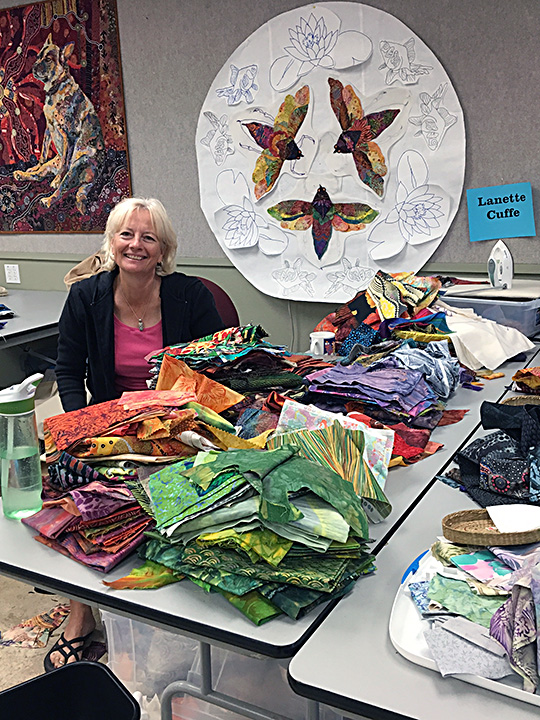
What makes this quilt especially memorable for me, is the story behind the subjects and design, and one I could hear Lanette tell over and over again. She titled the quilt, “Pond of Death,” and wrote out the story in the text below.
Our son and his sweet family bought a home that had a small water feature in the back yard with water lilies. They introduced goldfish, that kept coming up dead. One day as Matt was walking nearby, a very large, 3 inch bug landed on his shoulder to which Kelly reported “he screamed like a little girl”….( I would have paid money to hear that! ).
Anyway, he caught it, and found out it was a predatory beetle, native to Montana. They live under the ice in the winter, feed on fish and snakes by grabbing onto them with their hooked legs and nose, and proceed to suck their insides out! Yikes! I wanted to create a Quilt that depicted the scene, but making them less scary.
I chose the mandala design as it fit well with the idea of beetles circling their prey. With their pinchers touching, it created a shape reminiscent of a skull, which I had to add, complete with a goldfish peering up through the eyes of the skull. It was so fun to do, and now hangs in their entryway. I really enjoyed working with Susan’s method, found it very freeing. Also, it has taught me to look at fabrics in a different way.
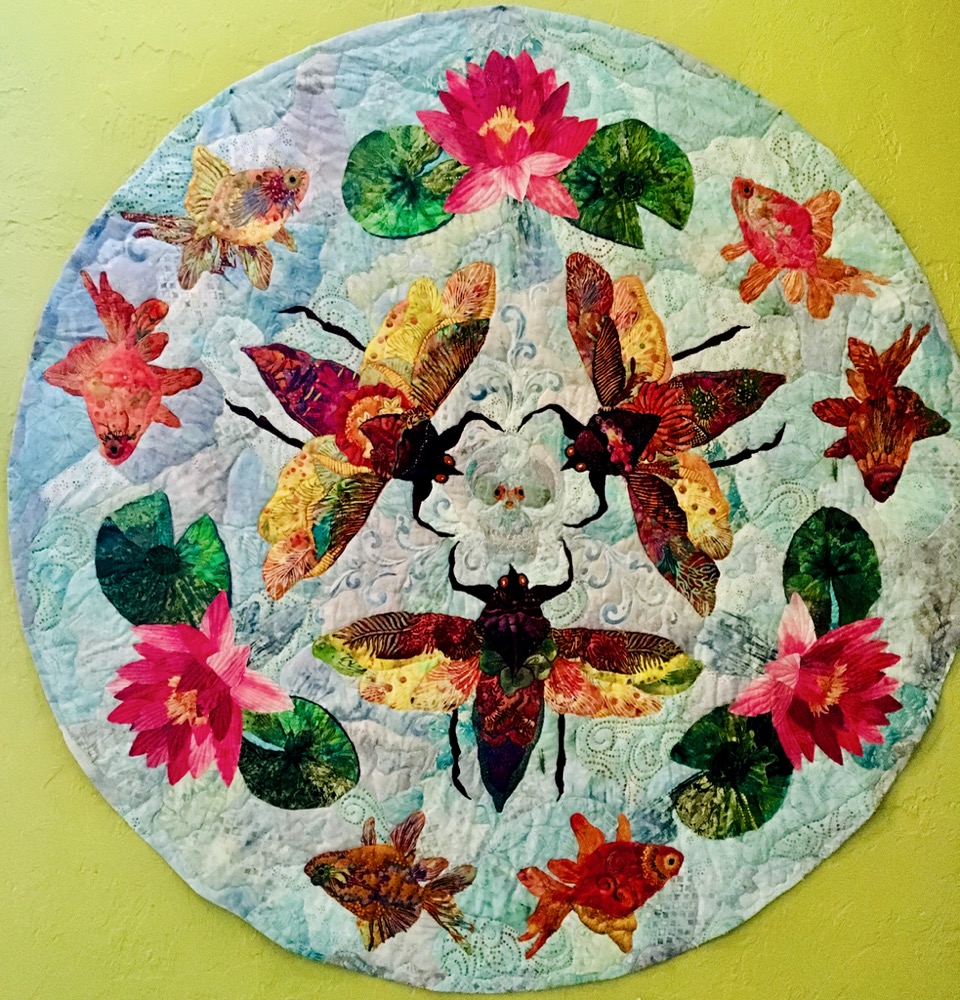
In the second class Lanette took with me, the next year in July 2017, she chose quite the different subject matter—her grandma. Portraits can be tricky, and those of loved ones especially so. Lanette was transitioning from a colorful and light-hearted subject to one that would need a softer touch. I remember it took just a little while for her to make the transition, but once she got the eyes in place, she was on a roll.
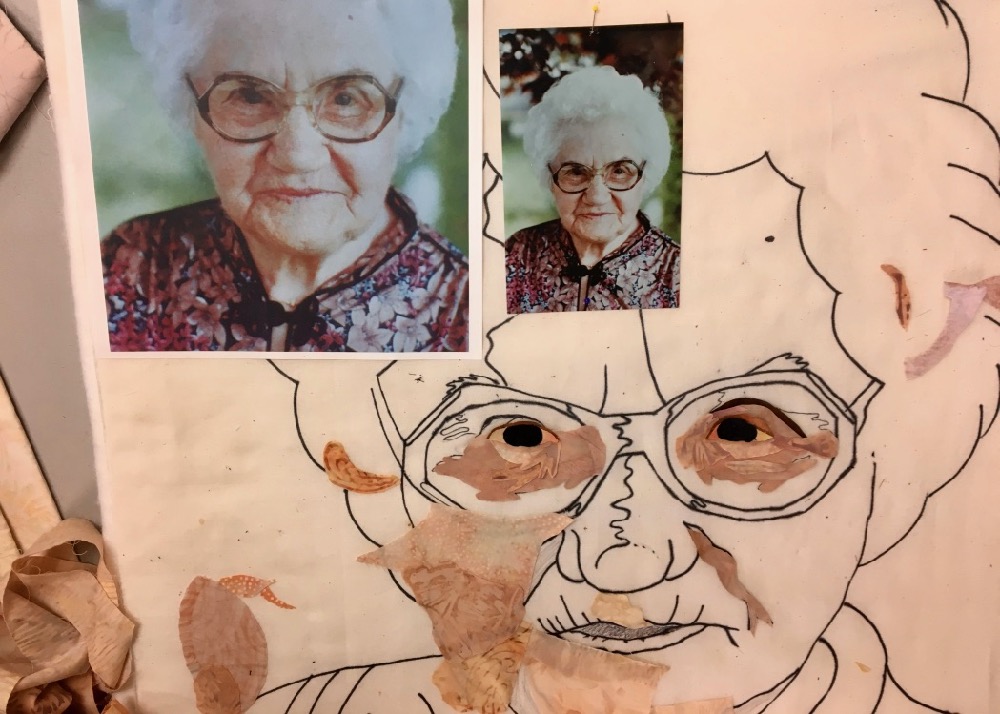
The photos above were all taken during the class, and Lanette had already achieved her grandma’s lovely expression. Her choices for clothing and background make this portrait into an heirloom. Tissue warning: Lanette writes a tear-worthy quilt story, below.
“Wear it out, use it up, or do without,” was my grandma’s life and attitude. She grew up in a sod house on the prairie of North Dakota, married at the age of 16, plowed fields behind a horse named Bill, and gave birth to eleven children with the help of a midwife in a bedroom on the farm. At the end of her life of 96 years, she had 26 grandkids and 13 greats, all of whom received a Quilt or dolly blanket from her. She never bought new fabric for Quilts. To her, that was a sin. She taught me how to garden, can, save seeds, to cook German, and to trust God. In her memory, I’ve used the Dresden pieces she never completed for her dress, scraps from other things I’ve used for her face, and the background is the dolly quilt she made for our daughter when she was eight. The fabrics in the background are all pieces found in my quilt presented to me when I was twelve. My grandma, my teacher, my mentor, miss her still!
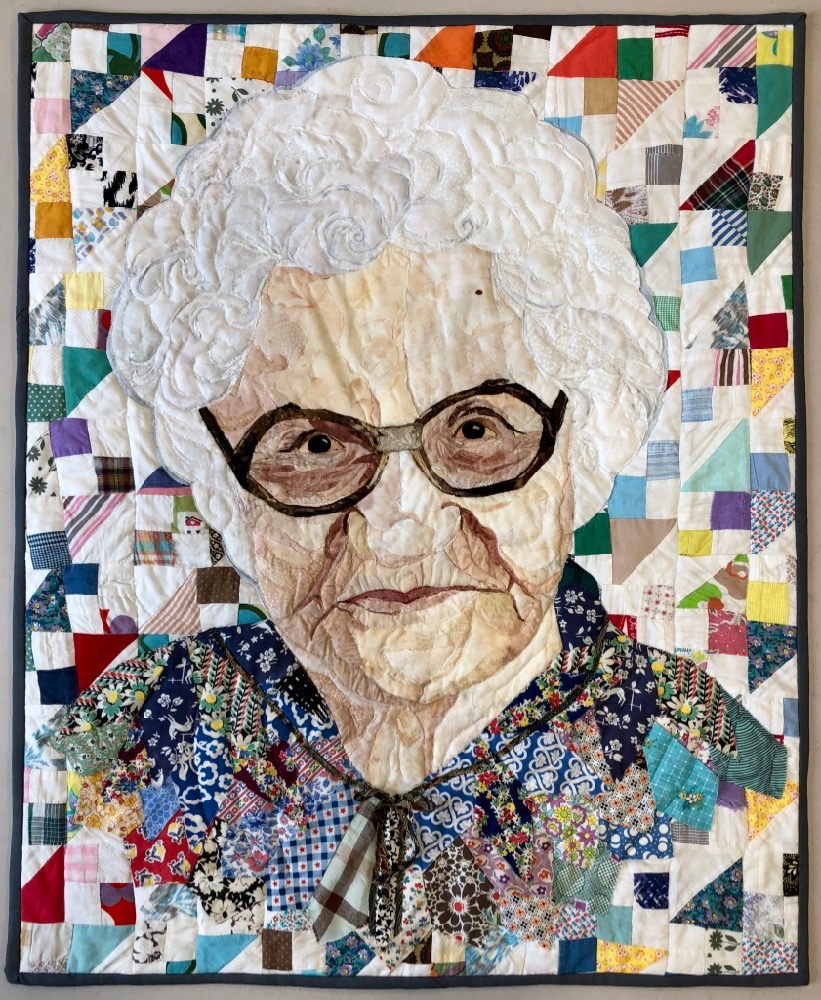
Diana Bartelings
In the 2017 Quilt Gallery class prior to the week I met “Grandma Eslinger,” I met Diana Bartelings and her Markhor goat of Asia—adding to my knowledge of our world’s animals.
In Diana’s words:
This Markhor goat is an endangered species found in the mountainous regions of western and central Asia. I took this photo when I was at the Calgary Zoo. He was sitting in the sun, he lifted up his head and to me he looks like he is singing with joy.
Diana choose to go the non-realistic path with color choices—which I totally agreed with—and began creating her own memorable rendition of this endangered creature. I remember in class we referred to him as “the yodeling goat.” Rolls right off the tongue, doesn’t it?
From Diana:
It took me a bit to wrap my head around creating a collage. Once I got it I fell in love with it. I really enjoyed the process of cutting out all the small shapes and the freedom to look back and forth from the piece to the photo and back to make my decisions. It felt really free.
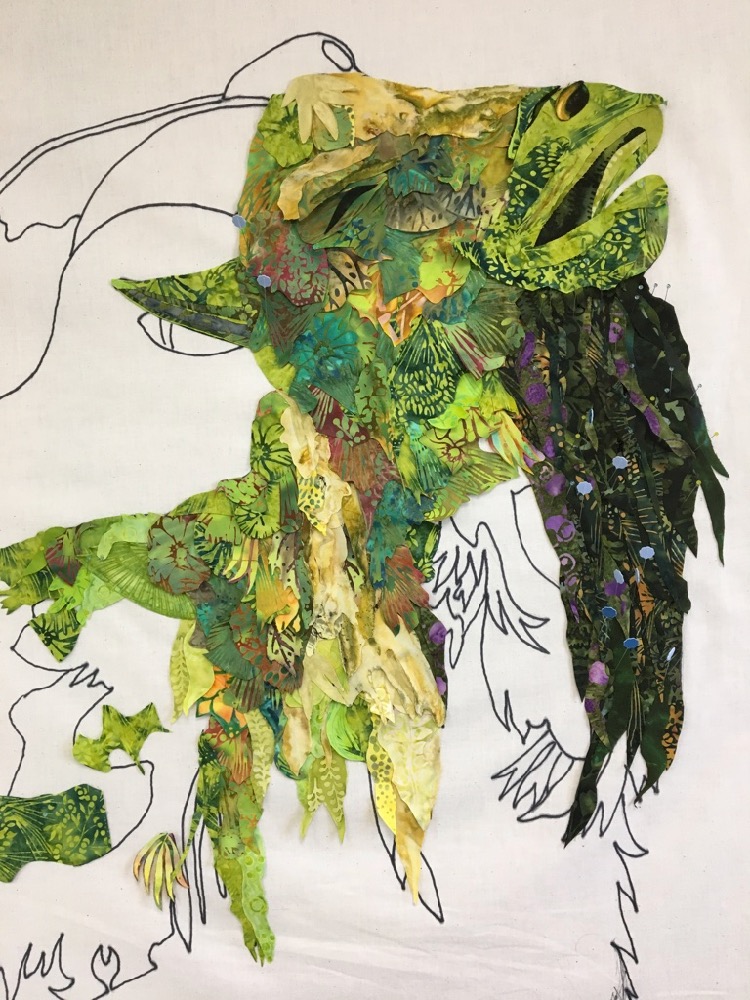
Diana sent me some additional images and text of what she calls her, “Journey in Collage Quilting,” following below. She did such a great job with all that shaggy fur, using the prints in the fabric and varying the sizes of the shapes for visual interest. And what a nice curve to the horn.
What I did have a bit of a problem with is value. I got so carried away with the colours that I forgot to really check my values in black and white. I did not even realize I had a problem with it until it was in a quilt show and I noticed a couple of people couldn’t see what it was. Most people saw it right away but enough people did not that I know it is an issue. Once you see the goat you can’t unsee it. A lesson learned. Also once I put the tulle on it seemed to mute the piece a bit. I’m not sure I made the right choice there either. I still like it and my oldest son loves it. It hangs in his home now.
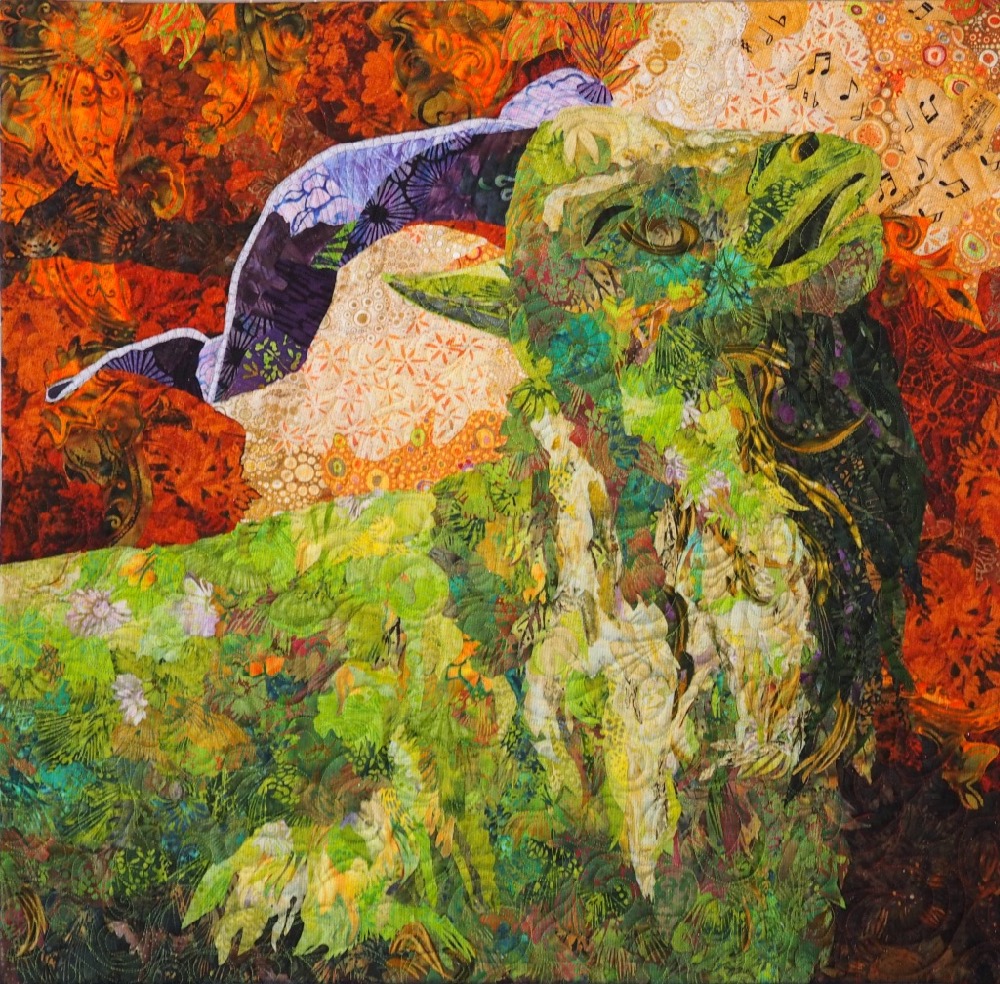
Deb Schultz
In last week’s blog post of this year’s first of two classes at the Quilt Gallery in June, I met Deb Schultz. Her collage quilt subject was a Big Horn Sheep in orange and turquoise. During class she showed me a photo of a collage project she made as homework for the upcoming class in Kalispell and I asked if she’d send it to me for this post.
Deb sent the photo and…
…an explanation of the ‘trout’ I did without benefit of your instruction. I certainly know more now and would do things differently. In any event, ‘Finnius McTrout’ was made for my son in 2015 & 2016 after purchasing your book and giving it a try.
I enjoyed seeing the beginning photo, above, and seeing how many unusual objects I could spy in this interestingly assembled Western trout. And in the finished version, there’s even more to search for, as this was a round-robin project with an art group Deb is part of. You too can follow her explanation below, and try to find the finished quilt features she refers to.
Finn was the central feature for my winter “Threadhead” project. Threadheads is a local (Jackson, WY) design group who’s challenge, which started in the fall of 2015 and completed in May of 2016, required each member to develop a feature element that then would be added to each successive month—like a round robin except the project is yours to develop each month rather than passing it off to another member of group. In November the inspirational word for adding to your project was “backlight”; in January 2016 it was “contrast”; February was “manic”; March was “off the grid”; and April was “circling the wagons”. Can you guess where I incorporated these words or ideas? Some are obvious, others obscure.
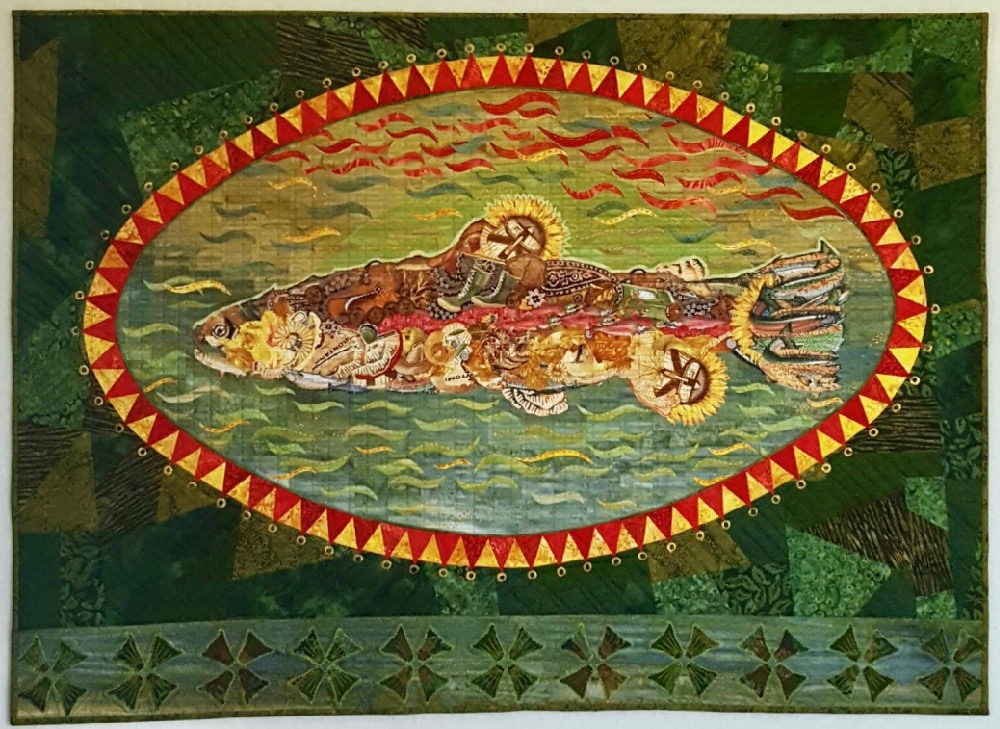
Julie Sherrick
The final two students, Julie and Sunne, that I’ll be featuring in this Part 1 Quilt Gallery collection, are another two who live in Kalispell and have had other finished quilts of theirs shared in previous Finish Line posts—so you may remember one or both of them.
Julie Sherrick has now collaged a series of portraits of her pups: Stella in 2014, Rufus in 2017, and this year, Louis. “Stella” and “King Rufus” can be seen in this Finish Line post from last year. Having Julie in class is such a pleasure, and not just because of her smile and great personality—I love seeing these portraits of hers develop. She really takes into account the individual personalities of each canine and chooses the poses, her fabrics, backgrounds, and even quilting designs accordingly.
From Julie:
This was made in my third fabric collage quilt class with Susan at the Quilt Gallery in Kalispell. I had such a great time in the class. Collage is my favorite technique—for some reason I like it much better than piecing. Hope to see Susan in Kalispell again next year.
This is Louie, a.k.a. “Tiny Boy”, and also “Sweet Boy”, our Aussie Shepherd/Cattle Dog rescue. “Such tiny pieces,” my classmates exclaimed, as they passed Louie and my piles of Australian fabric. Such a tiny dog too, as it turned out—too tiny for most of the larger patterned Australian Aboriginal dotted fabric I’d planned [dots because Louie loves (circular) balls]. So I turned to smaller dotted patterned Hoffman batiks, plus digitals, and other Australian inspired prints—still with plenty of “balls.”
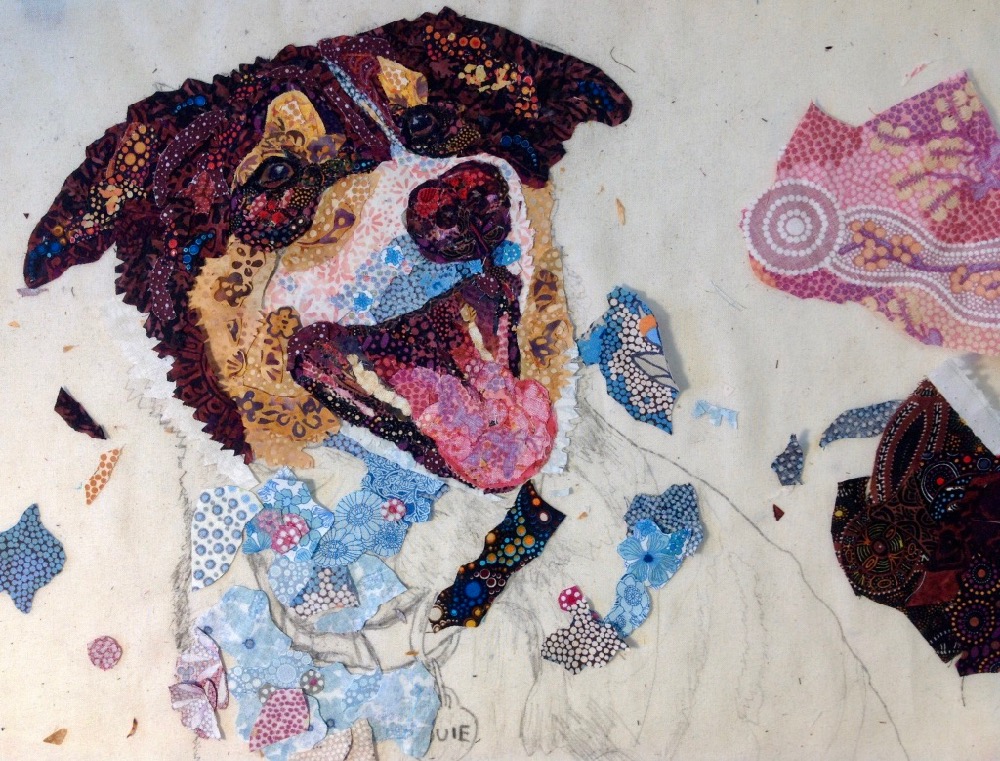
In the photo above, Julie and I are discussing Louie in June’s class at the Quilt Gallery. Julie came to class with a good part of Louis’ head already pieced. She’s right, his portrait is “tiny,” certainly not the size I would recommend for any sort of collaged portrait. However, knowing how she works, I wasn’t concerned about her ability to handle detail, and the very small (shall we say tiny) pieces of fabric she would be manipulating in order to get the final results. And as I expected, she did great, again. And this time, I got to meet the excitable subject himself in class one day.
Note the circular balls quilted into the background in these finished quilt details. And now back to Julie:
The white areas were a challenge in value, but I really liked how the lace Susan suggested using on top of the calicos and the blue dotted Aboriginal designs worked to lighten the shades and also suggest fluffy dog fur. I could use the same base fabric minus the lace for the darker areas.
The background ended up being much simpler than I had planned and was more suitable for the sweet, simple portrait that Louie turned out to be. “Looks just like the photo” said my classmates—the sunny batik, the ball (he had to have a ball) and the little pink triangles suggesting a photo mounted in a scrapbook felt like all he needed.
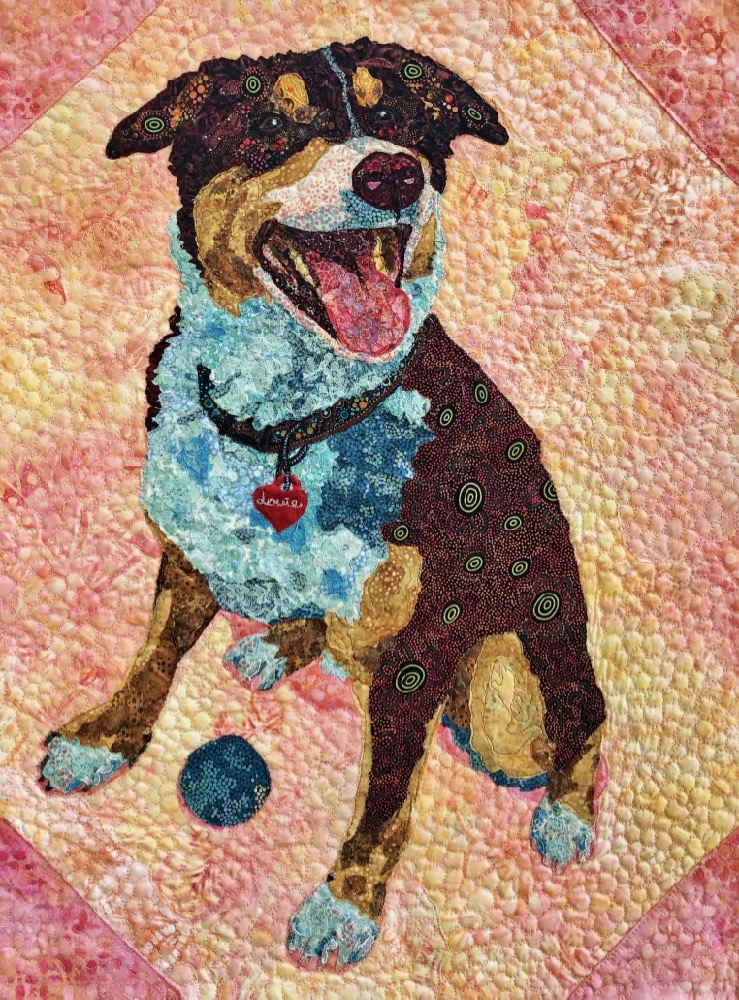
Julie brought three other quilts into class this year to show and share. I love this butterfly quilt—even more after hearing it’s story. In the upper right of the detail photo above, you can see the words she stitched, “I’ve been to Mandalay and back again.” Julie’s stories of this quilt and the following two landscape quilts are below.
At the time I made this quilt, I had taken two fabric collage classes from Susan at the Quilt Gallery in Kalispell, MT. The design was based on one of Susan’s butterfly patterns, the Billowing Butterfly. It started as an exercise in cutting and gluing but ended up taking me back to my childhood in Myanmar (then Burma) more than 50 years ago. The pink border fabric, purchased at the Quilt Gallery, reminded me of ethnic Burmese textiles, and when I got it home, was amazed to see the name of the fabric, “Mandalay” printed on the selvage. Clearly the Hoffman designers had been inspired by these textiles, which inspired me to get out some of the fabrics I had purchased in Mandalay on a visit there in 2016, (the blue and green shot cloth).
I add the Burmese script, which I found in a photo on the internet, to fill in the two corners. The word “Mandalay” is the word in the lower corner and the script in the upper corner is from a slogan posted in a Burmese pagoda: “impatience, short life, patience, long life.” Impatience shows up in my life often (and unfortunately also in my fabric art), so this seemed like a message from the universe. In Burmese mythology, the butterfly is a migrating, transforming symbol of the soul and the piece ended up connecting me with my life in Burma a lifetime ago.
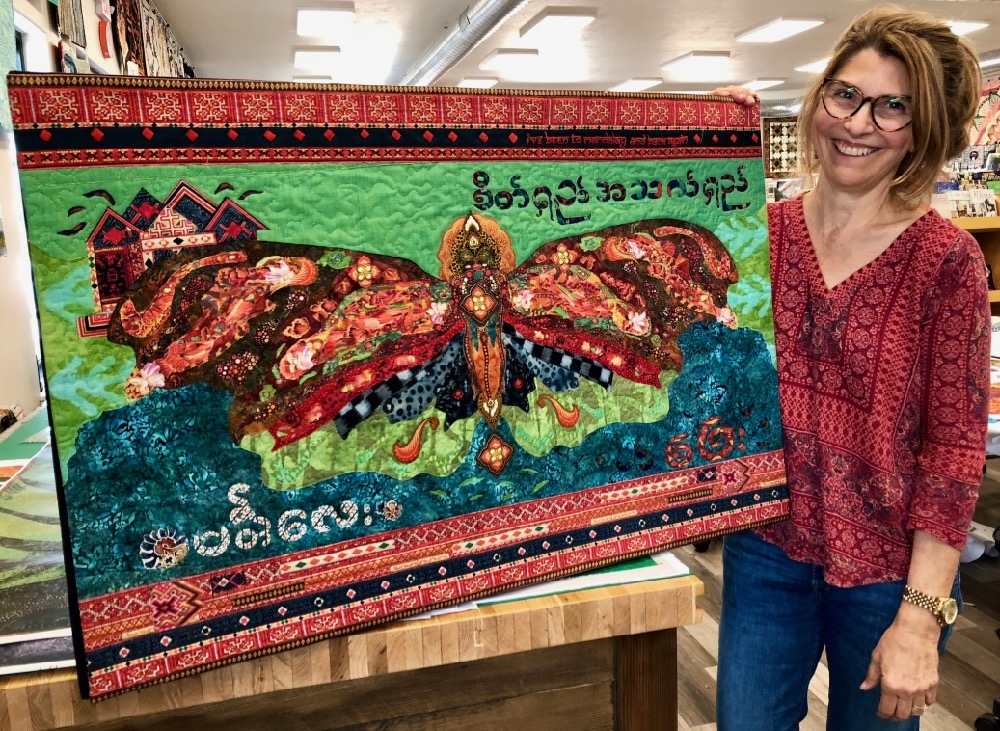
Above left, “Fall 2” (2018, 29×29 inches); above right, “Our Only Home” (2019, 30×27-1/2 inches).
These two quilts are the last and largest works in a series of 13 called “Protect the Forest”, and were begun in the fall of 2018 after I finished the Mandalay Butterfly. I love the jewel tones of fall and was also thinking a lot about trees as we were in the midst of an especially bad fire season. After piecing the first 12 quilts (including “Fall 2”), I decided for the last one I wanted to go back to the collage techniques I learned from Susan, as I was planning to soon take her class at the Quilt Gallery a third time. I had used some fusible and templates in my Mandalay Butterfly and found that I didn’t really like the results. To me, fusible makes things look flat and somehow less organic, and templates lock one into less interesting shapes that don’t always blend well. So for “Our Only Home,” I didn’t use any templates and just Aleene’s Tacky Glue and a little quilting held it all in place. I really like the softness of the piece and the way it suits the subject.
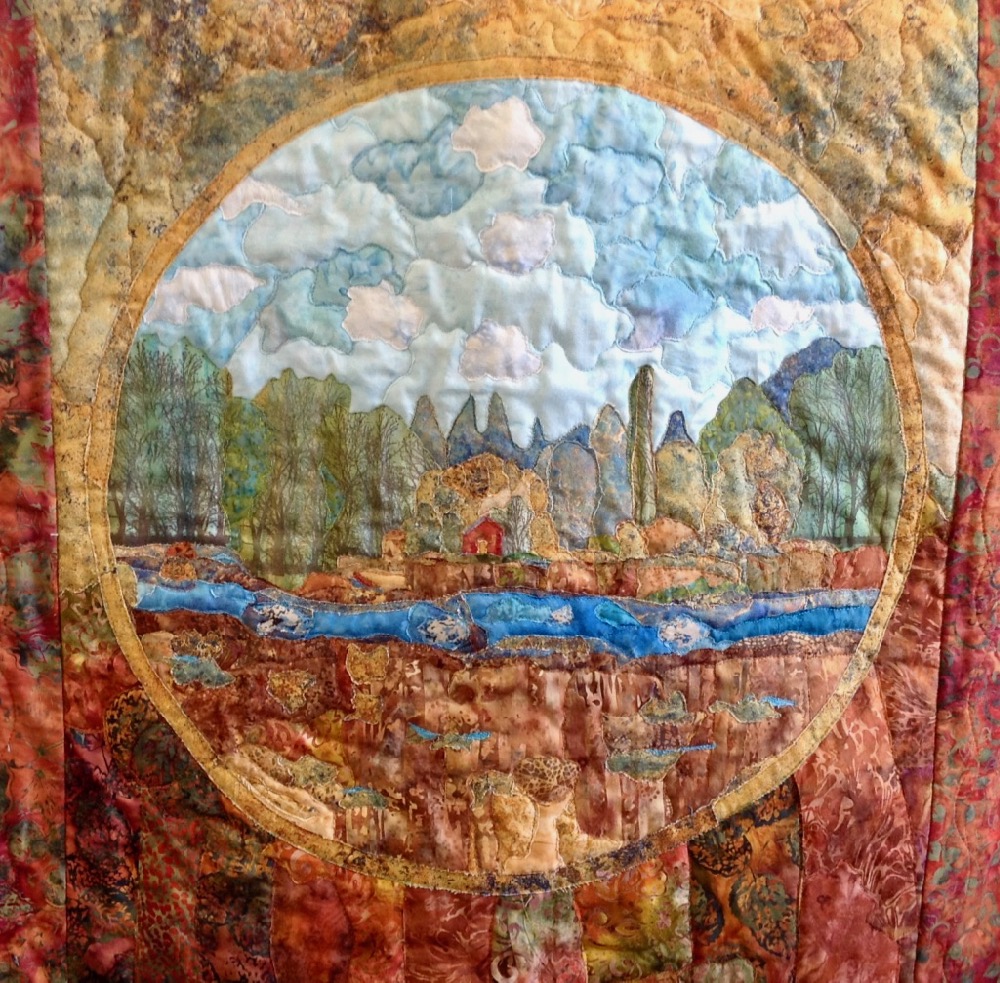
Sunne Brandmeyer
And we’ll finish up this week with Sunne Brandmeyer. I do believe Sunne has been in at least one class every year that I’ve taught at the Quilt Gallery. She lives locally in the summertime, so is always on hand to fill in a late cancellation spot, if she isn’t already signed up to begin with. Such was the case this year for the two June classes.
Sunne is a very prolific quilter and I’ve featured a few other fabric collage quilts of hers in this Finish Line post. This year I got to see two more finished quilts of hers, and one, the sinking of a cement ship in photo below, in person. Sunne is seated in the background, with this year’s (now finished) turtle dove in-progress in front of her.
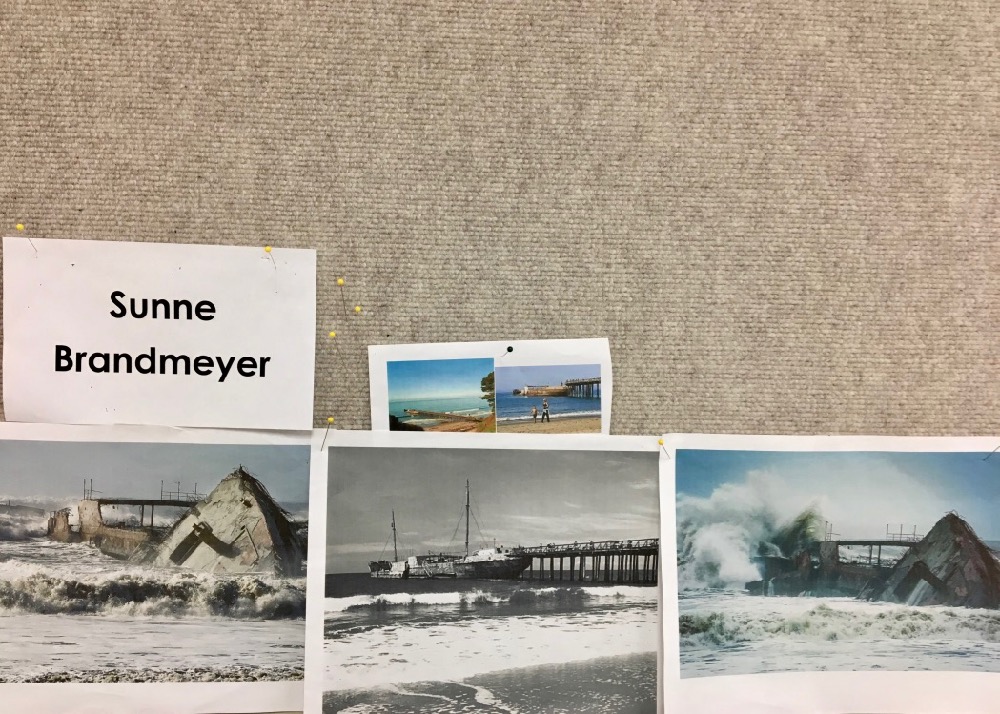
Not too long before the Quilt Gallery class that Sunne attended in June 2017, a beloved childhood memory of hers, a ship in Monterey Bay, California, suffered further wreckage off the coast. Sunne brought various photos (seen pinned to her board above) chronicling the life of this ship. Depicting a shipwreck in fabric collage was certainly a first in a class, and a final homage to this tanker’s story. I’ll let Sunne tell you about it below.
The SS Palo Alto was a concrete hulled ship, that launched in Oakland, CA in 1919. Intended for use as a tanker in WWI she was finished too late, and spent most of her life in drydock. She was purchased and brought to Monterey Bay, where she was grounded on a sand bar to be a night club. The depression ended her upscale career in 1929 and the State of California bought, gutted her, and built a fishing pier out to her.
For years she was a good fishing spot, and you could trap crabs in the holds. This is where we vacationed as a family, and for years I wanted to swim around her—which I finally did when I was 16—and though I kicked a few jellyfish (which scared me to death) I made it and swam it almost every day for 2 months. You had to swim way out around her—to avoid getting tangled in fishing lines.
Over time, the ship cracked and had to have ramps and guard rails. Winter storms have damaged it several times—it was cracked when I was in high school. It broke up badly in the eighties, and finally, in 2017 a storm broke the stern off and brought her almost up the beach, on her side.
I don’t know what it looks like now—and if I get to Monterey Bay, I don’t think I’ll go see. I found a couple of pictures of the wreck and made this quilt. This one is for me.
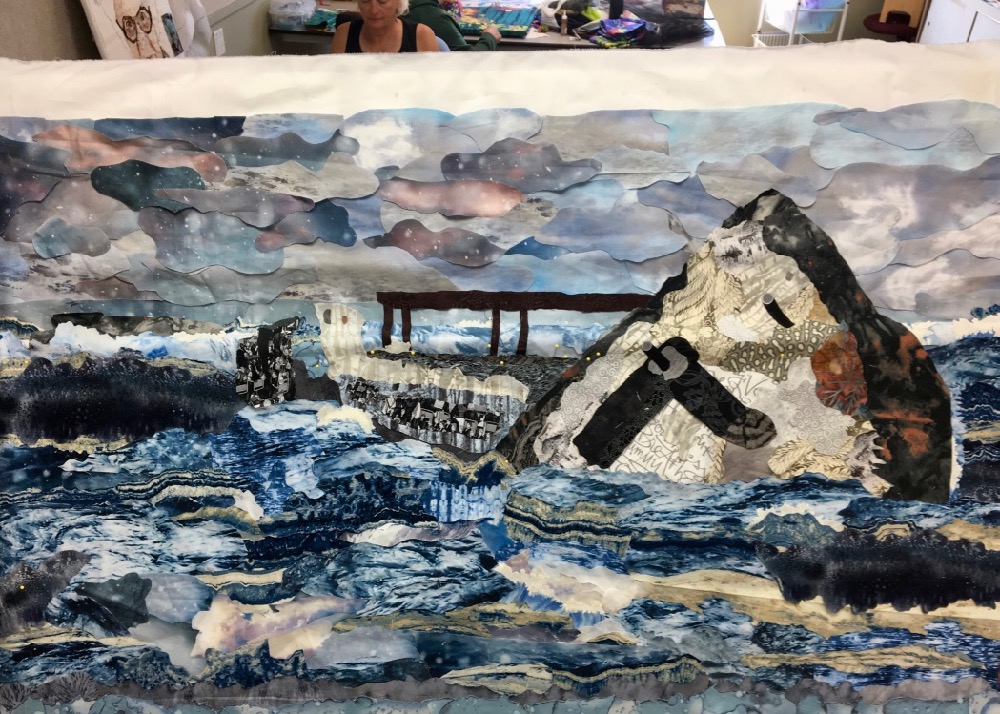
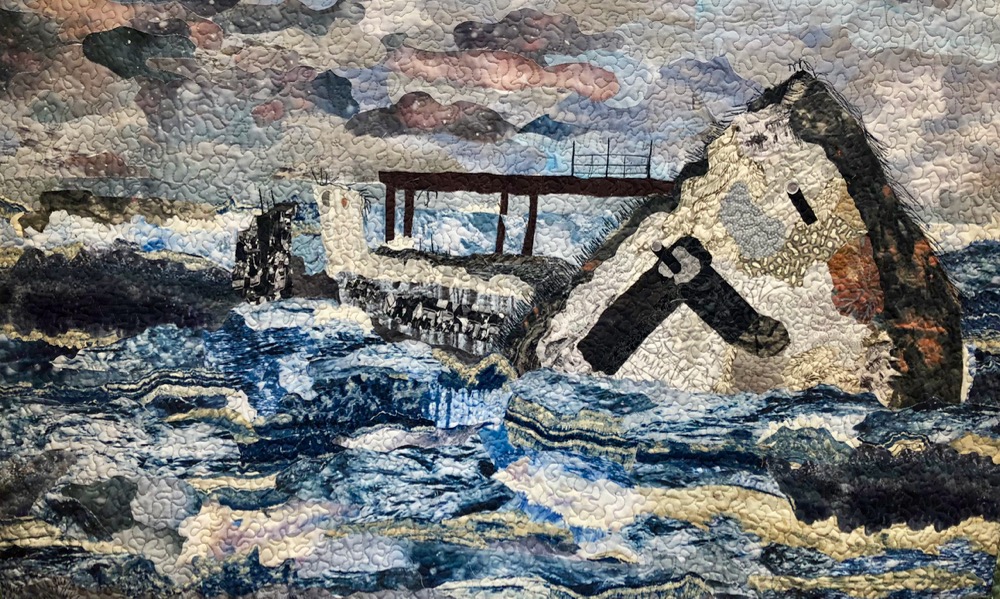

In 2014, Sunne made the first portrait of her grandson, J.G., in full laughter on the beach. Last year in 2018, she began a much more ambitious portrait of him as an angel—a guardian angel, that is. She had had enough experience with collage and portraiture to now know that in order to make a detailed portrait, full figure, with wide-open wings, and an interesting sky background, it meant going BIG. And she was ready for it.
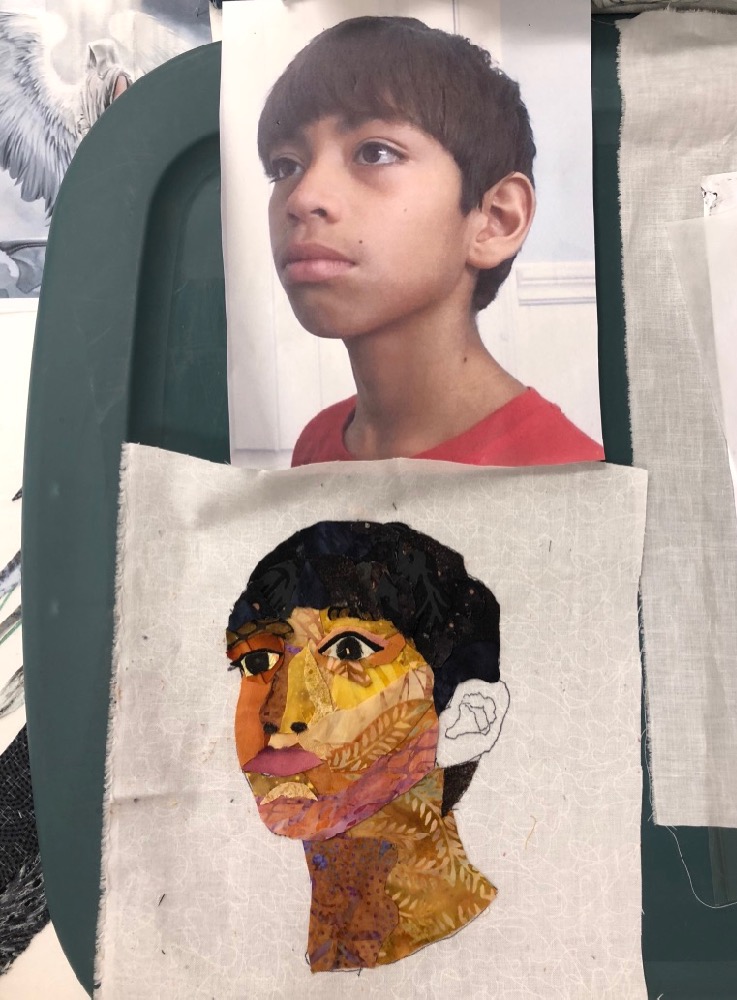
Sunne came prepared for the long-haul and started working in sections—tackling J.G.’s face first, then wings. She got into the first layers of the purple robe by the end of class.
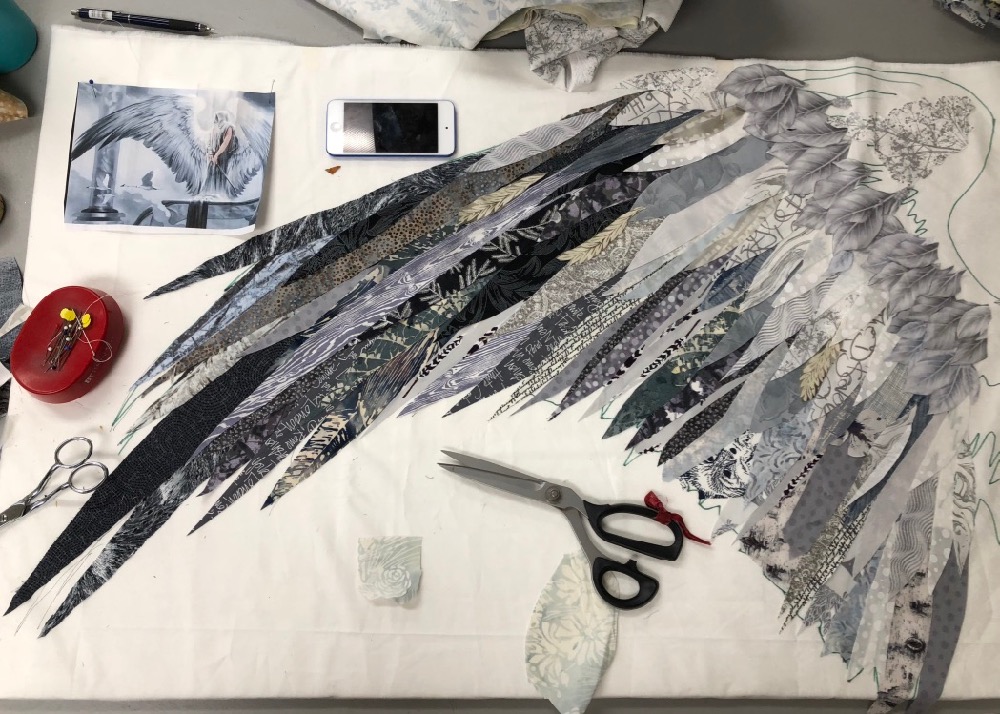
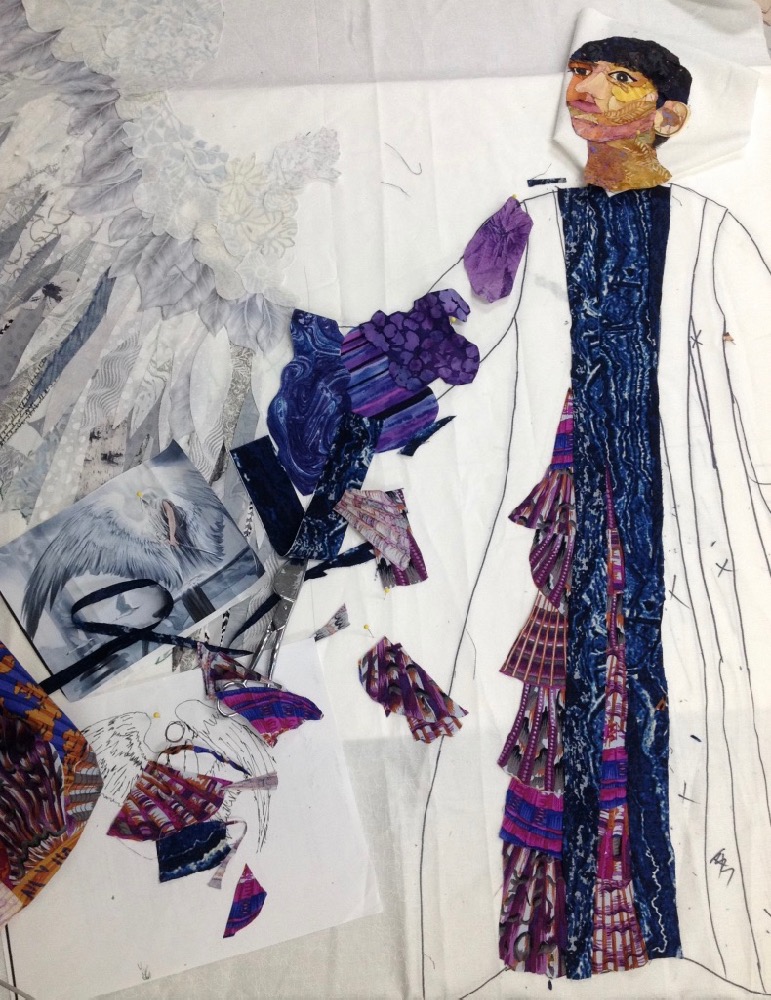
This angel is our grandson, JG (John Gerard) Brandmeyer at 11 years old. He was OK with being the model for an angel, as long as it wasn’t wimpy. So he is a tough, guardian angel—with sword. The size is about 5×6 feet, and runs the full width over our bed.
I doubt I’ll ever get to see this quilt in person, it hangs in Sunne’s winter home down south, but how impressive to see it finished—it looks epic—and I’m sure she sleeps knowing she’s well guarded.
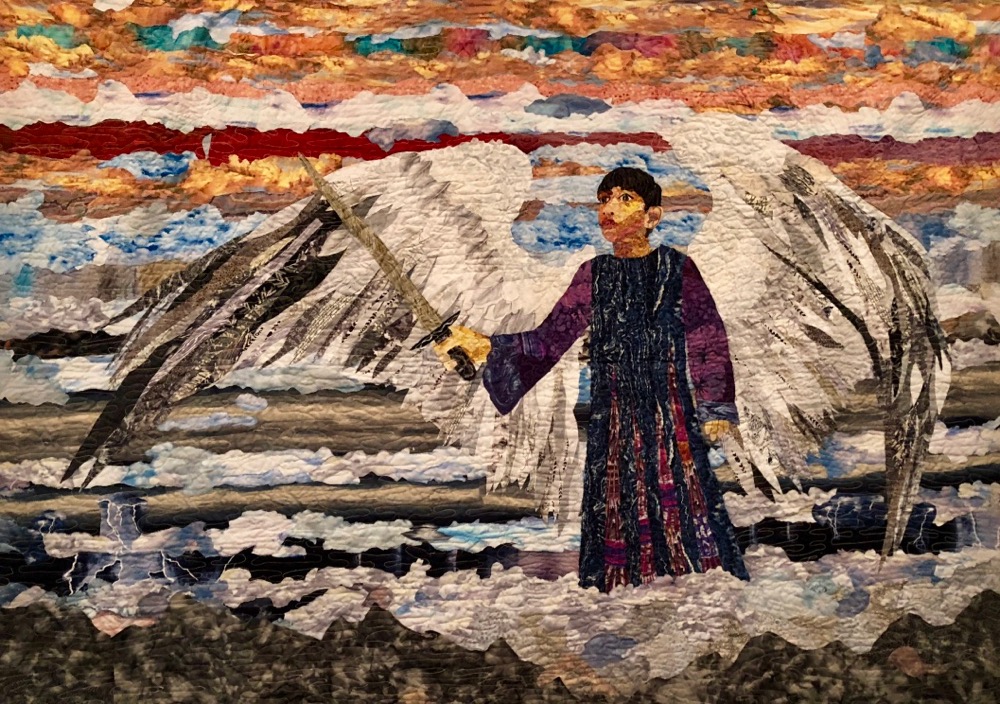
And now we’ve made our way to this year’s first class in June 2019 at the Quilt Gallery, where Sunne decided to make a quilt for J.G. instead of him. Sometimes a story can be very simple and straightforward.
Clyde the camel is from a picture JG (grandson) brought to me—because he thinks camels are interesting. This is for his room.
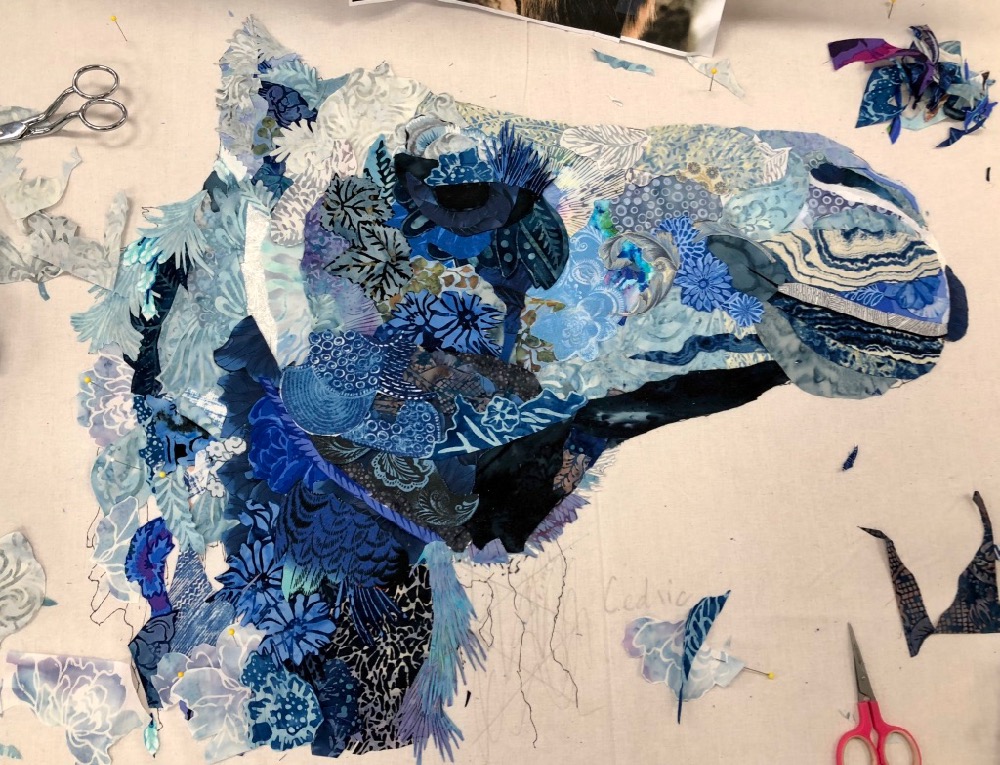
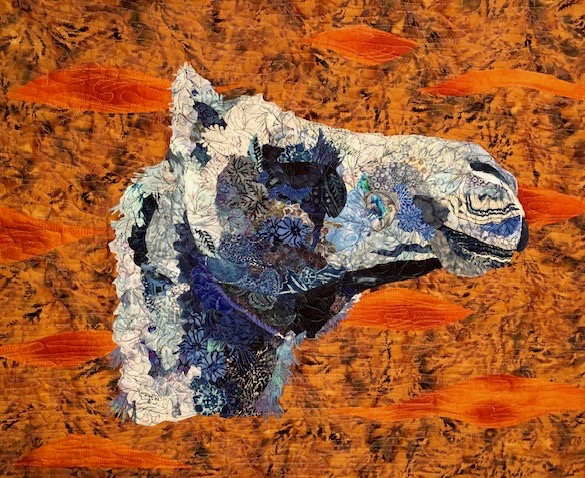
Sunne hadn’t planned on attending class #2 at the Quilt Gallery this year (the subject of next week’s blog post), but after a 2-day break between classes, she happily joined in and brought along a beautiful picture of the fanciest dove I have ever seen. Sunne has as much a love of color as I do, so she turned to the rainbow for this collage.
She found a nice variety of prints to suggest the change in feathered texture she saw on the bird—I especially like the fluffy down of the underbelly—plus the simply rendered yet sweet face. And Sunne’s quilt story gives another level of interest to this newest portrait of hers.
Jeanette the turtle dove, is named for Jeannette Rankin—the first woman elected to Congress from Montana, in 1916. She voted against entering WWI and lost her seat. She was elected to Congress again in 1940—where she voted against entering WWII—because we, “have to find a better way of settling our differences than sending our young men out to be killed.” She once again lost her seat. So she is Jeanette, because doves are the symbol of peace—and since she has a rainbow tail, she is also for pride.
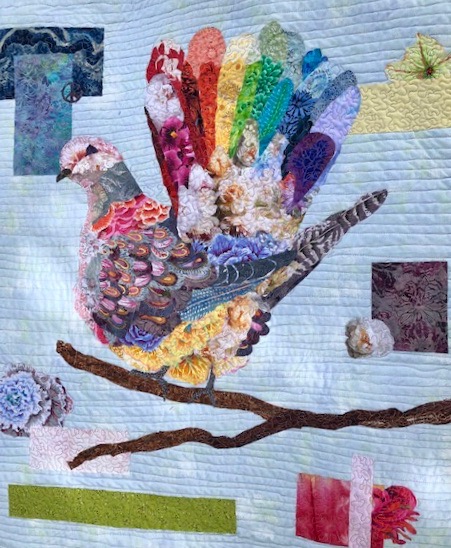
For those who may be interested: an upcoming class beginning late September at the Quilt Gallery in Kalispell, MT is Gloria Loughman’s “Textured Landscape”—September 30-October 4, 2019. Gloria is one of my colleagues and one of the teachers I have met that I would take a class from (if I ever have the luxury to take a class). We both teach at Empty Spools Seminars in California, and my husband Tom and I, recently spent a couple days with Gloria and her husband Tony, at their home in Australia. It’s not just that I love her dearly that I’m recommending this class either. Gloria is a fantastic artist who teaches internationally (this will be her first trip to Kalispell), has the reputation of being an excellent instructor (I hear things like this from my students), has written a few books attesting to her work, is a lovely person, and has a great accent to boot. As of the writing of this post, there are only three spaces for this upcoming class at the Quilt Gallery still available.
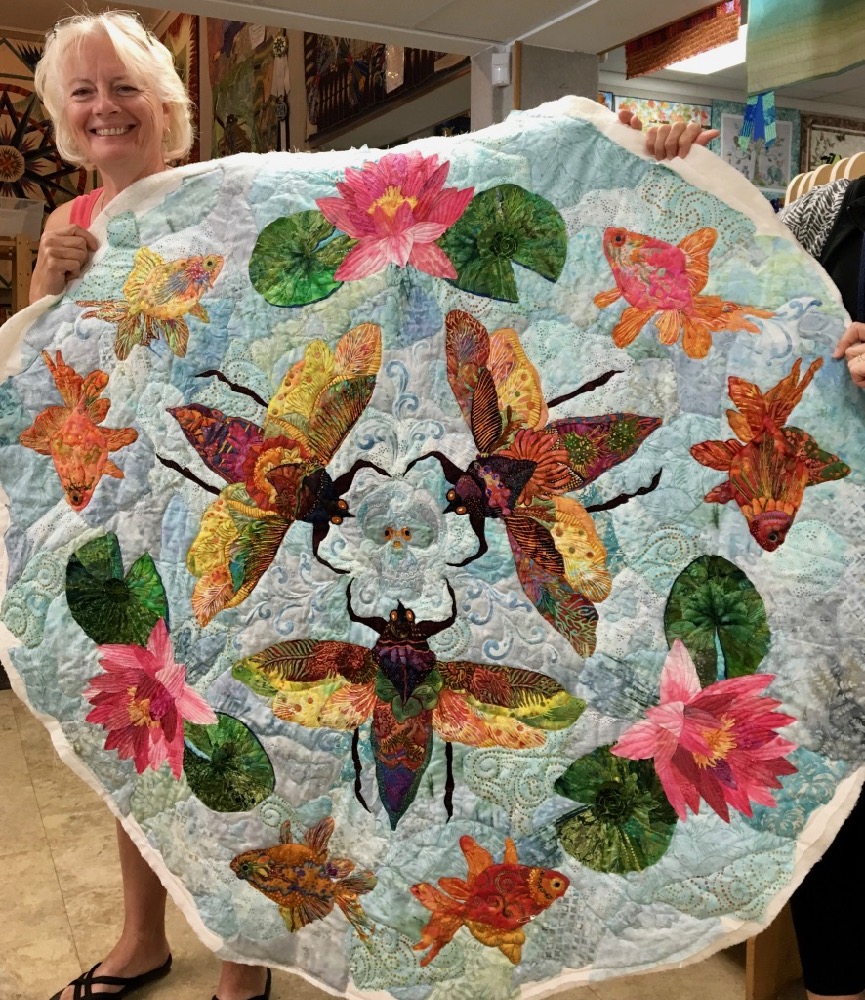






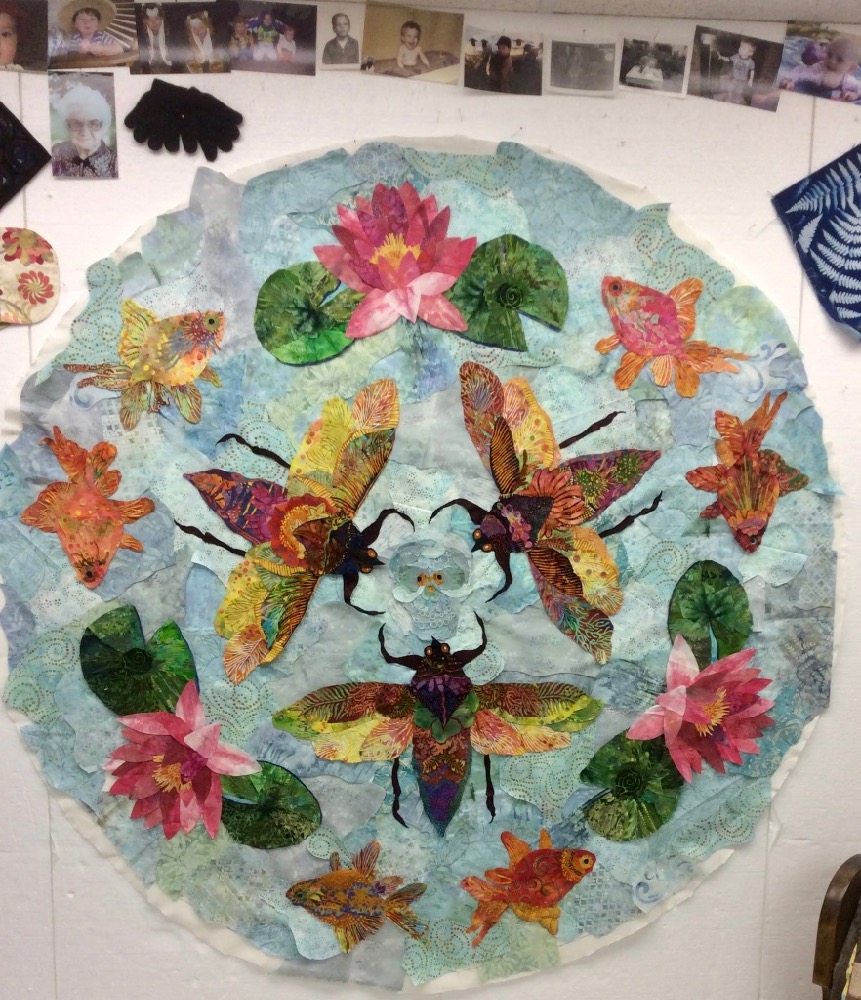
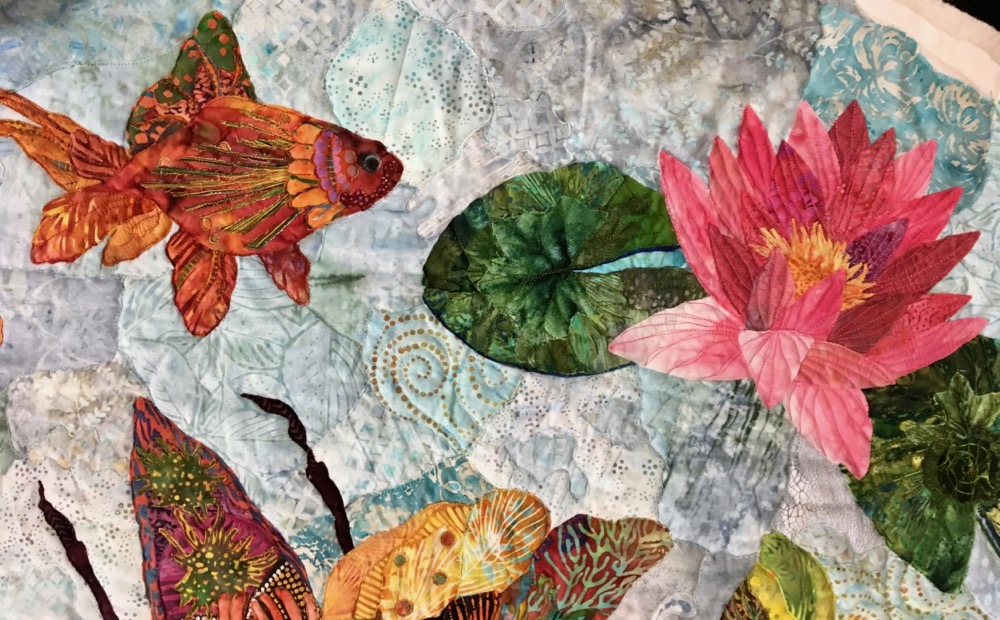
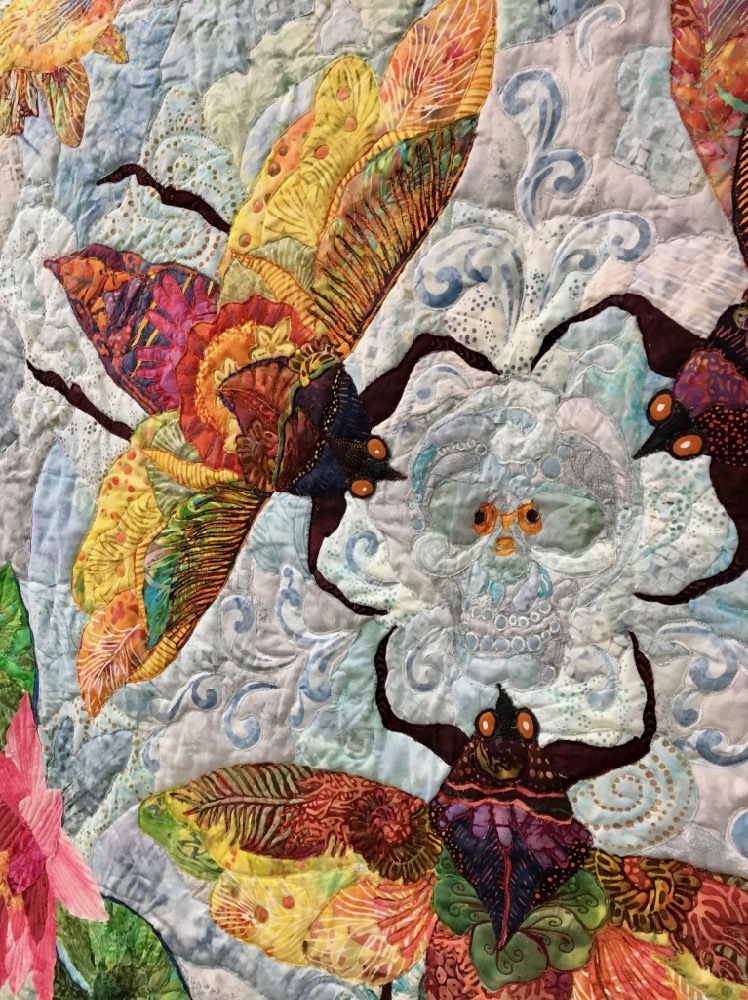
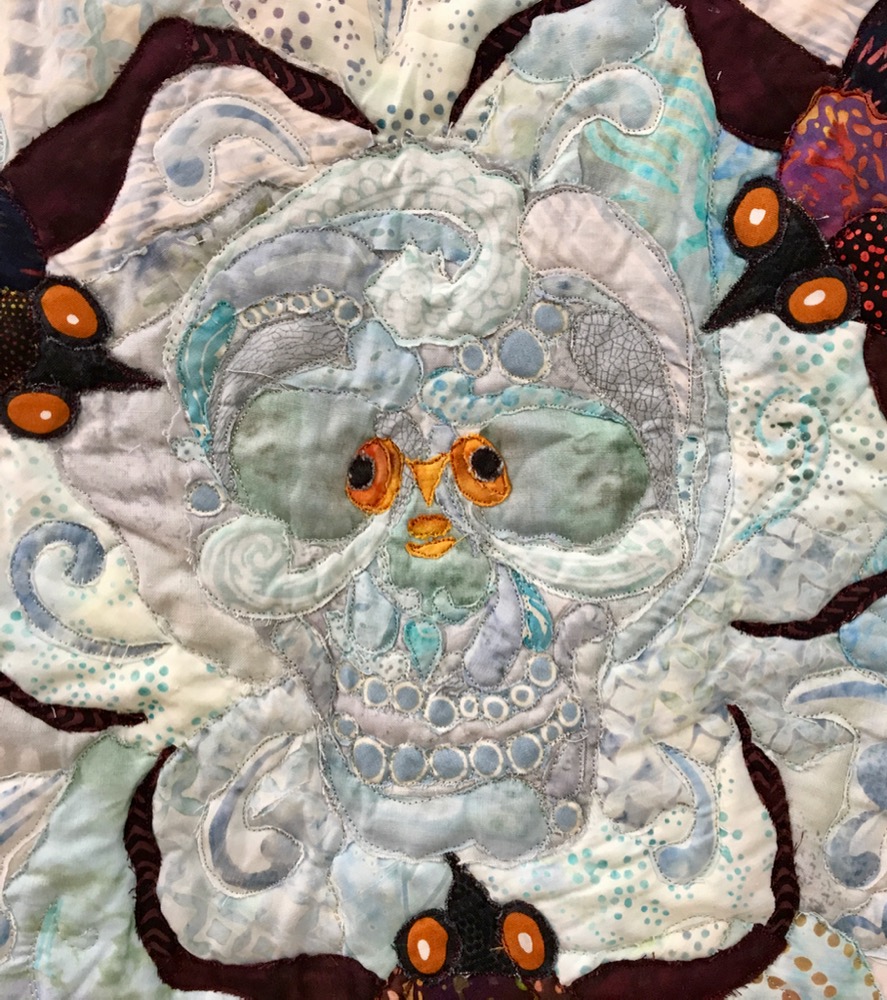






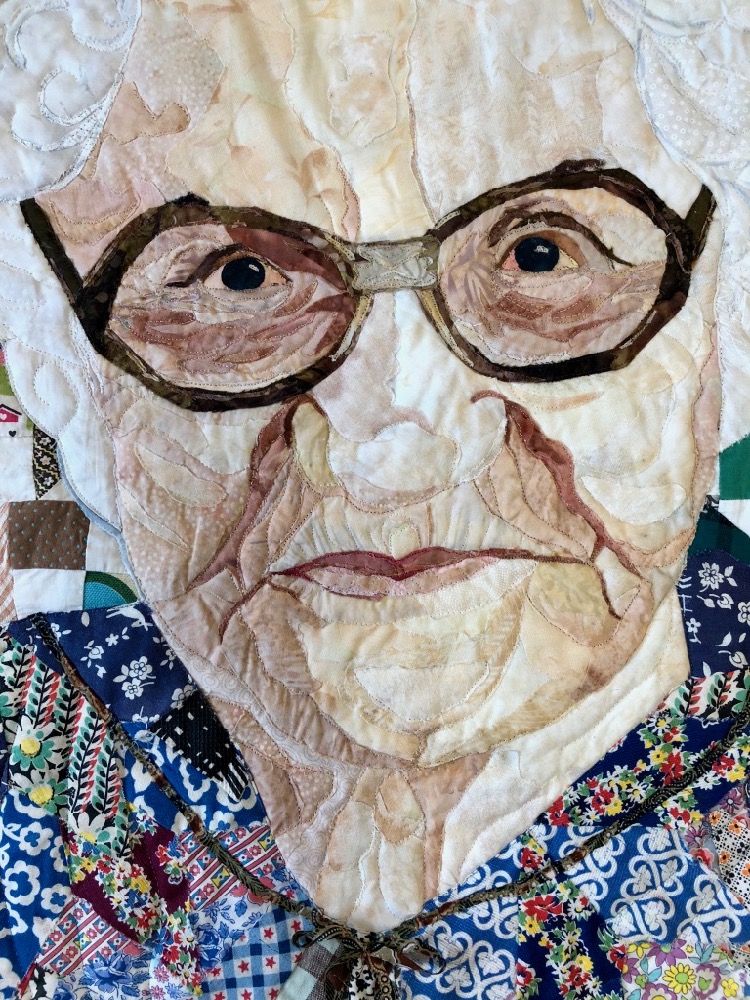


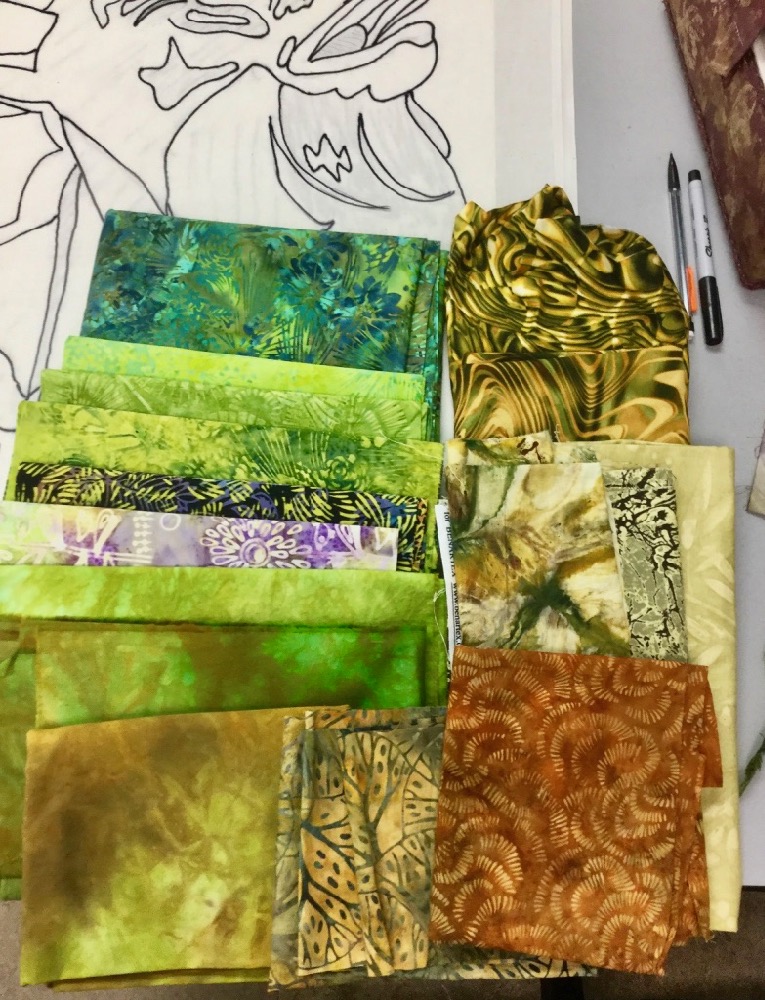


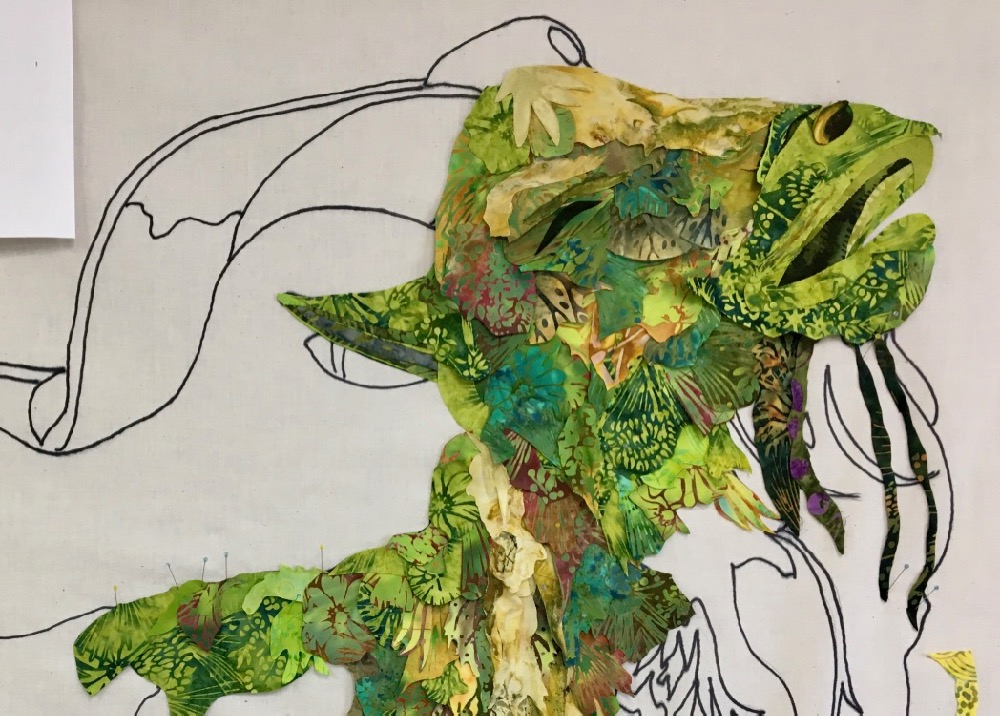
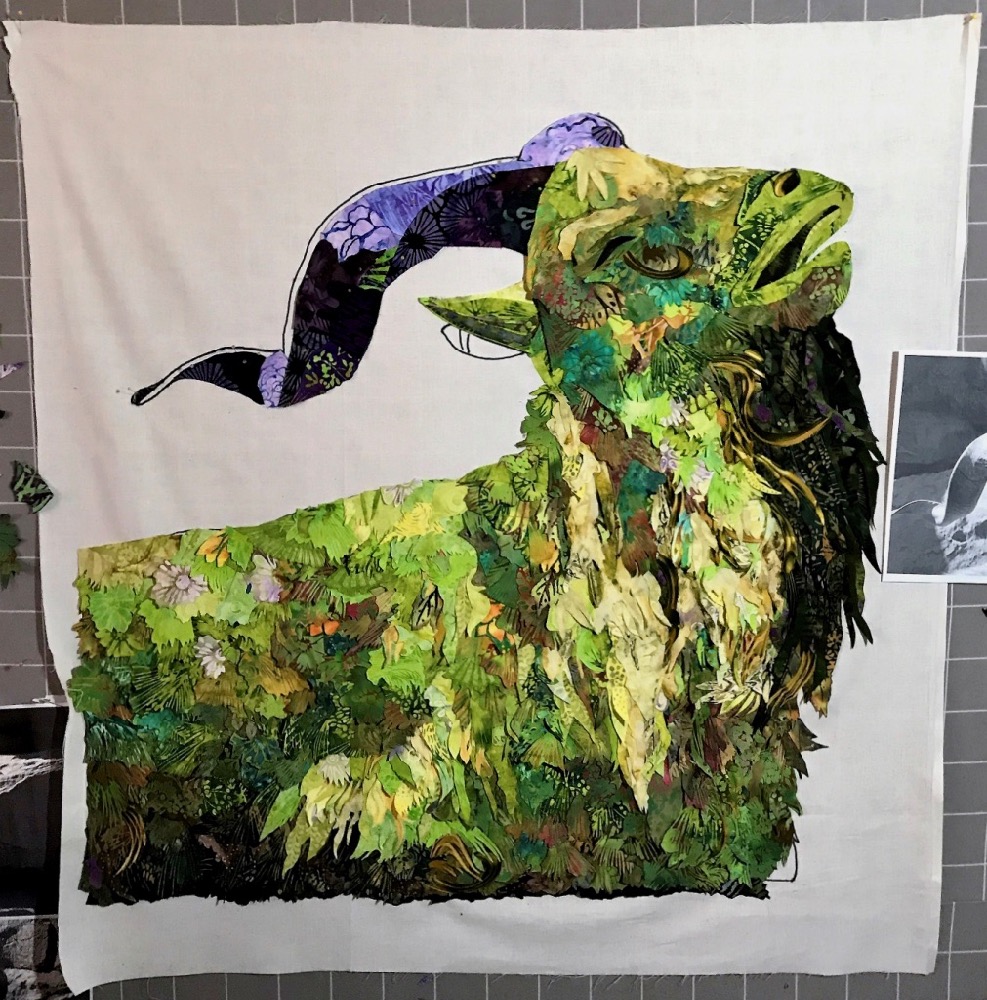
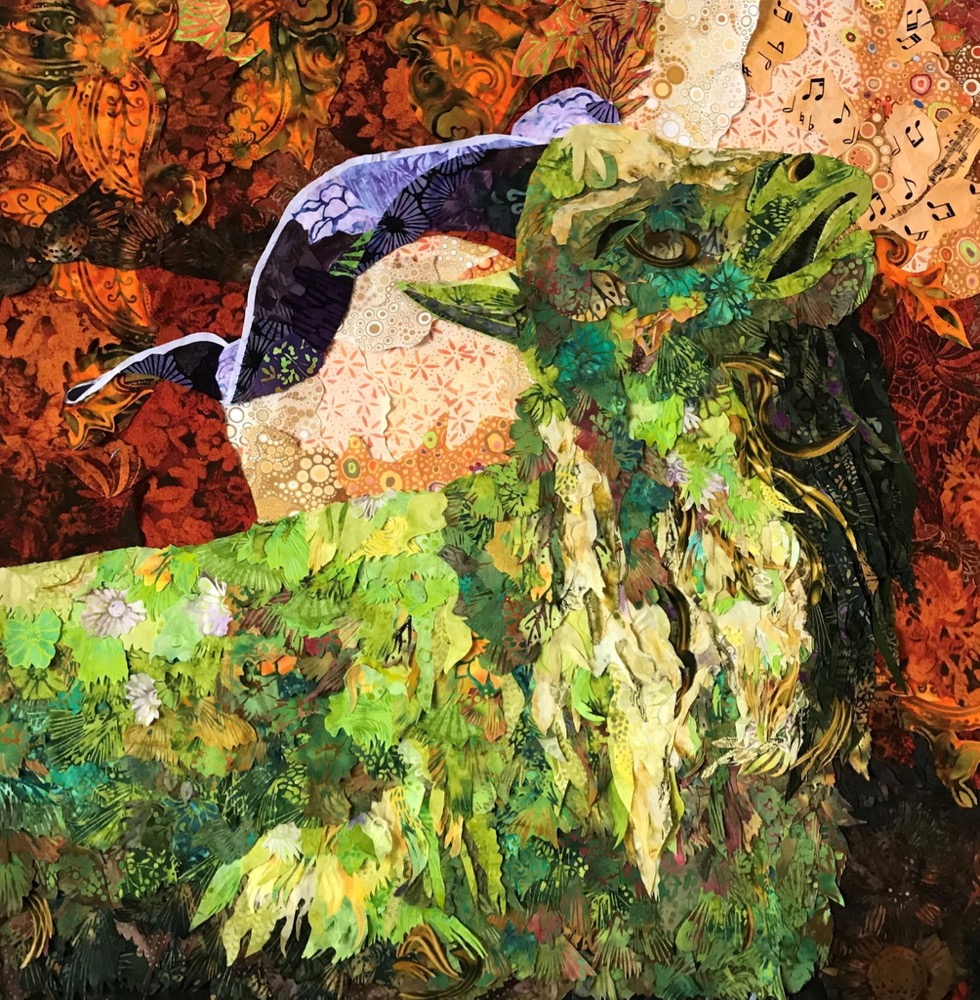
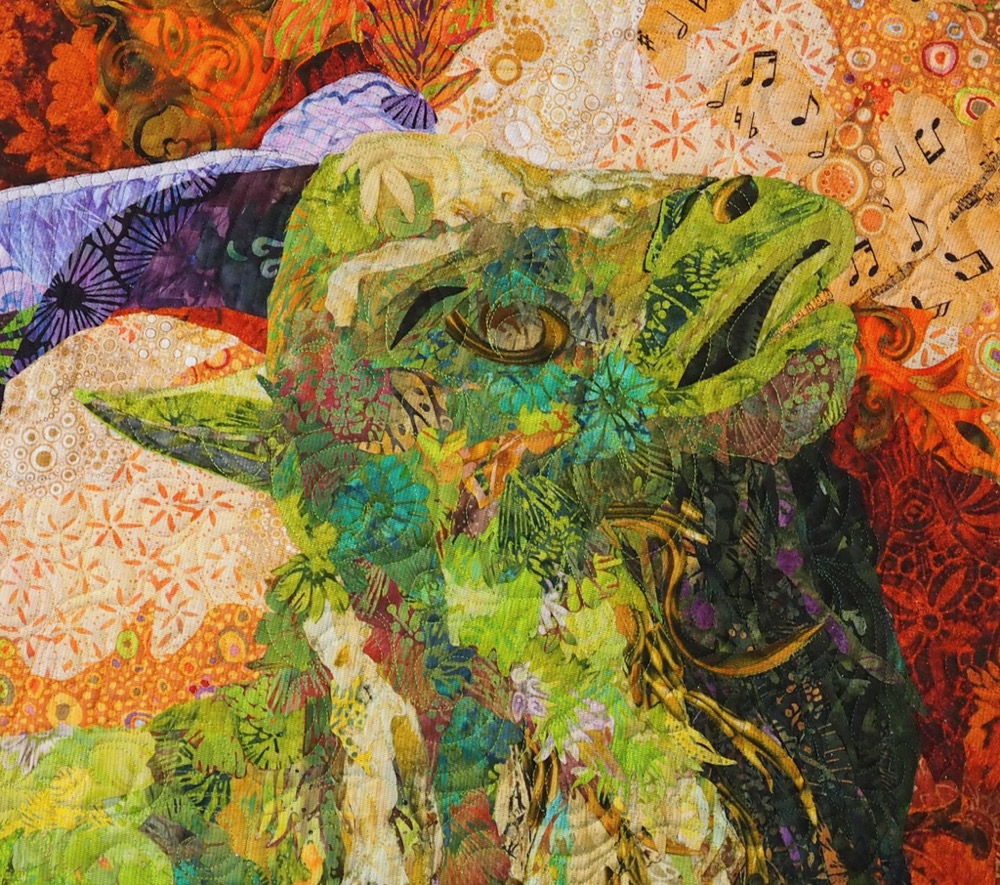
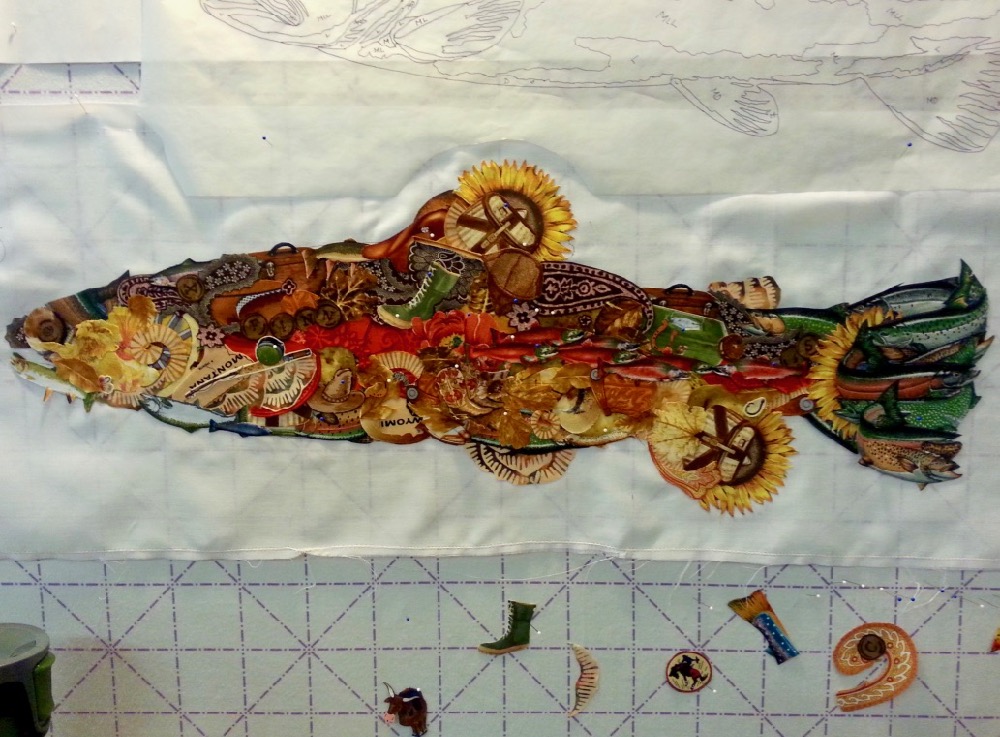
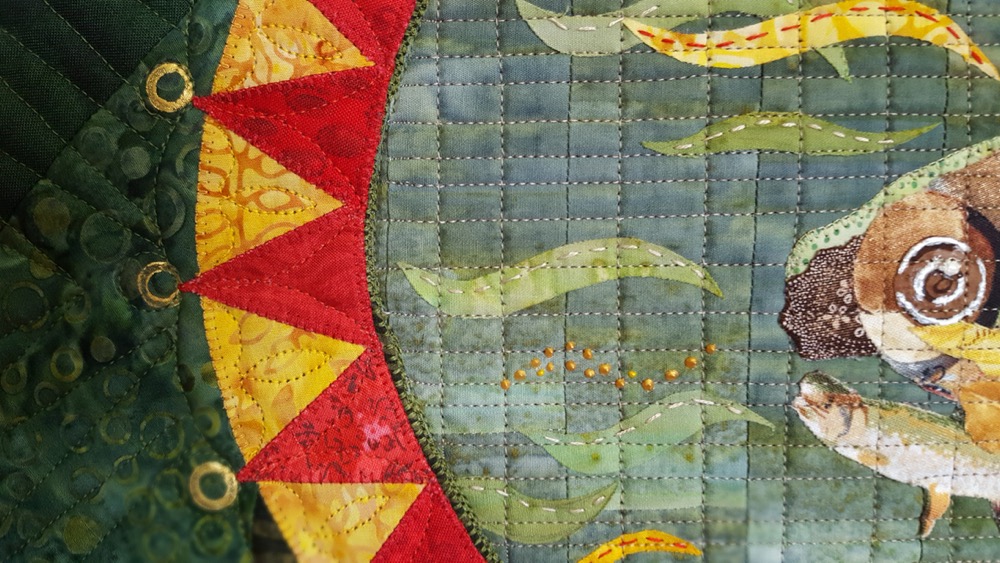


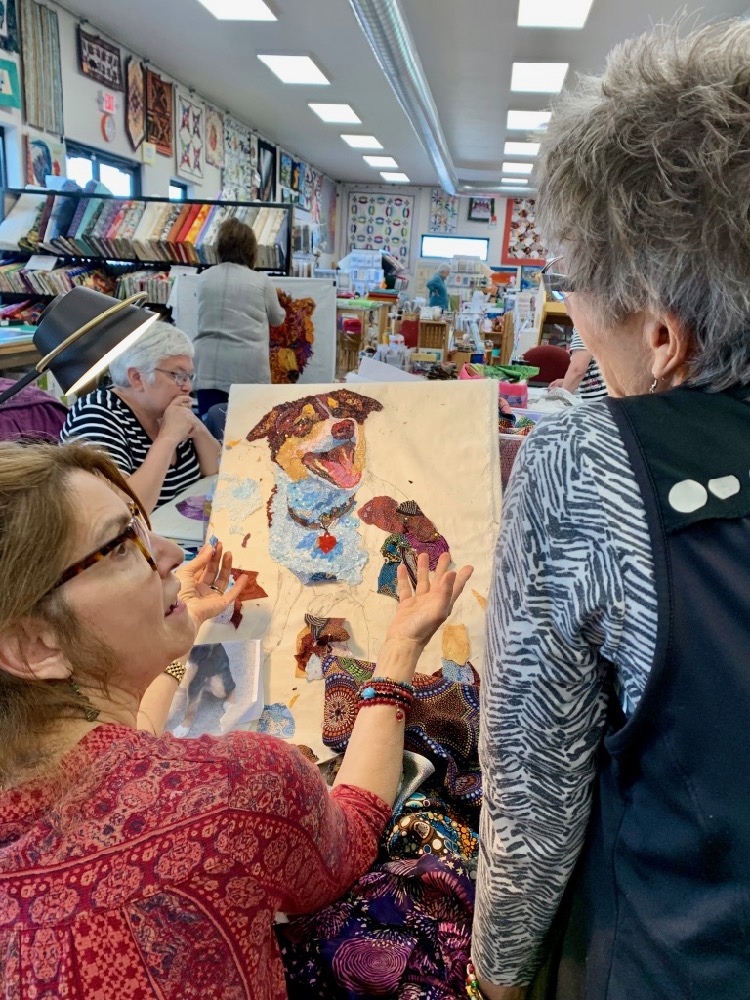


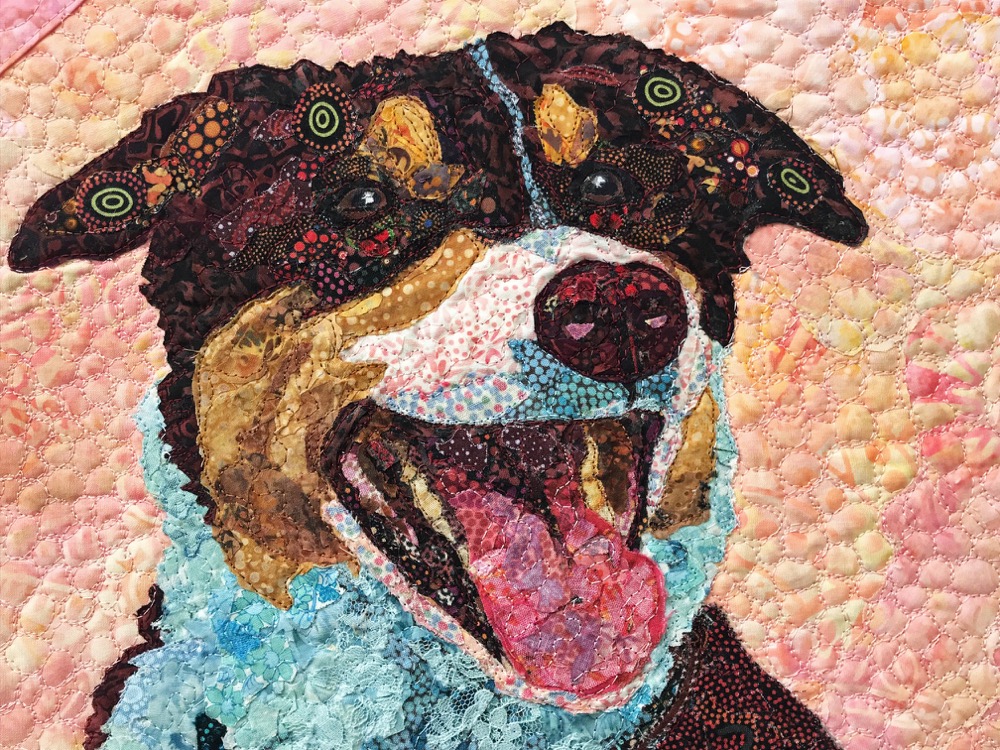
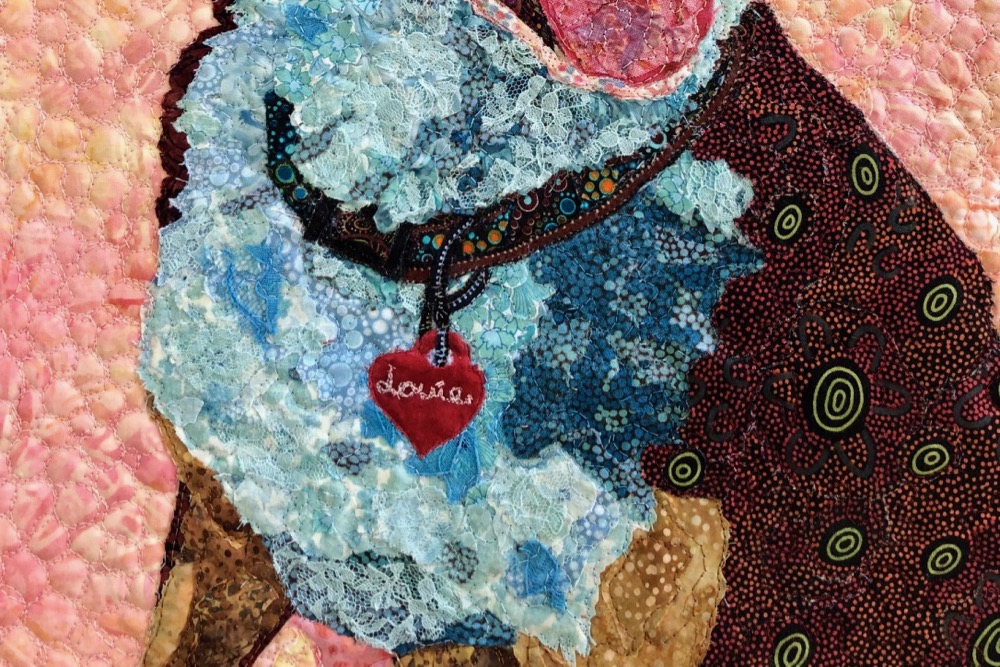
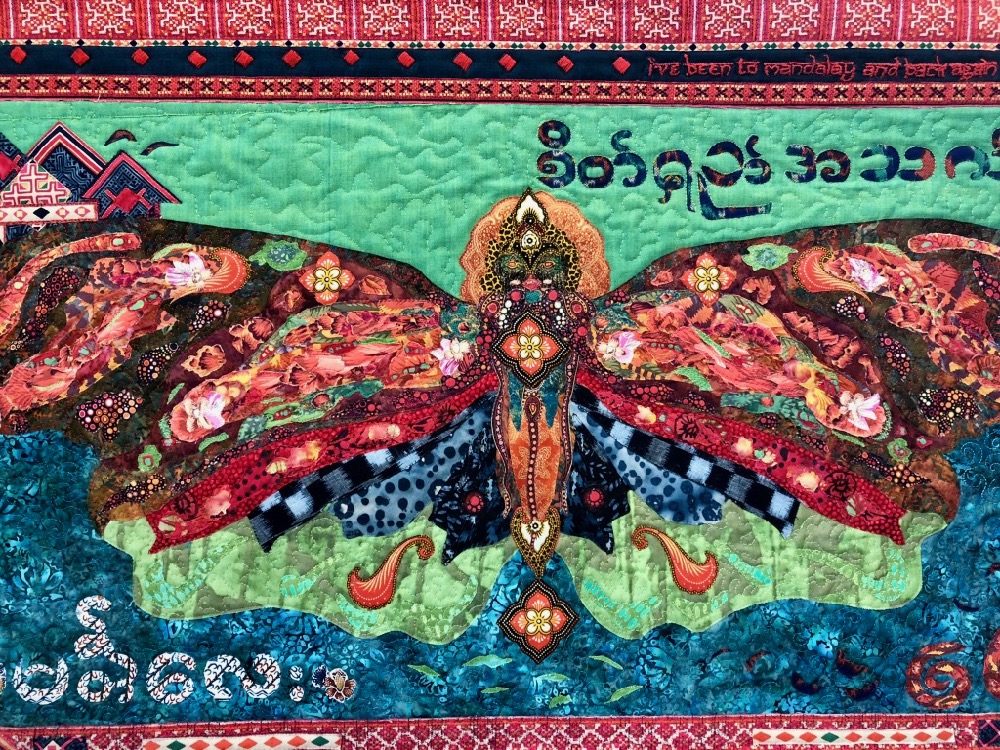
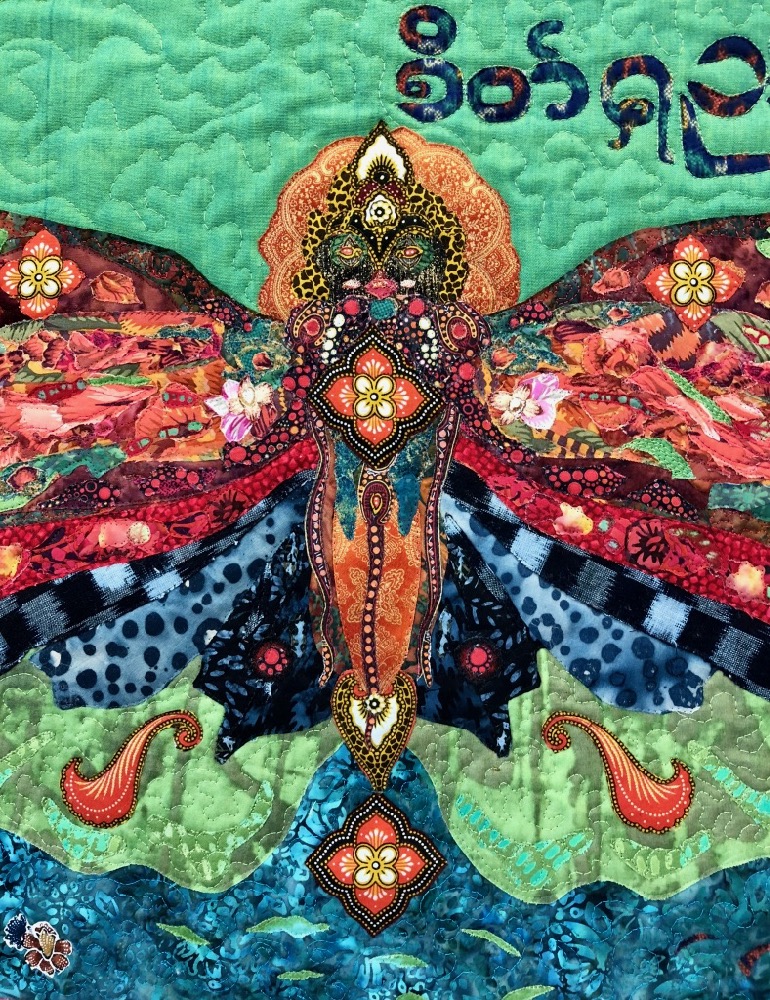


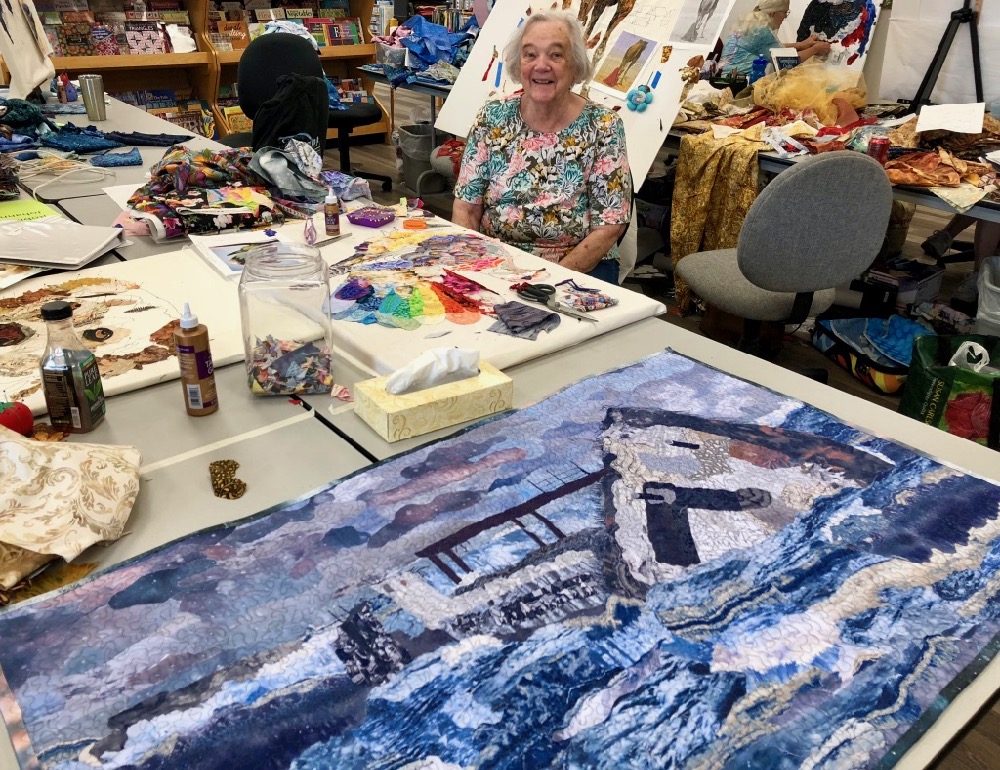


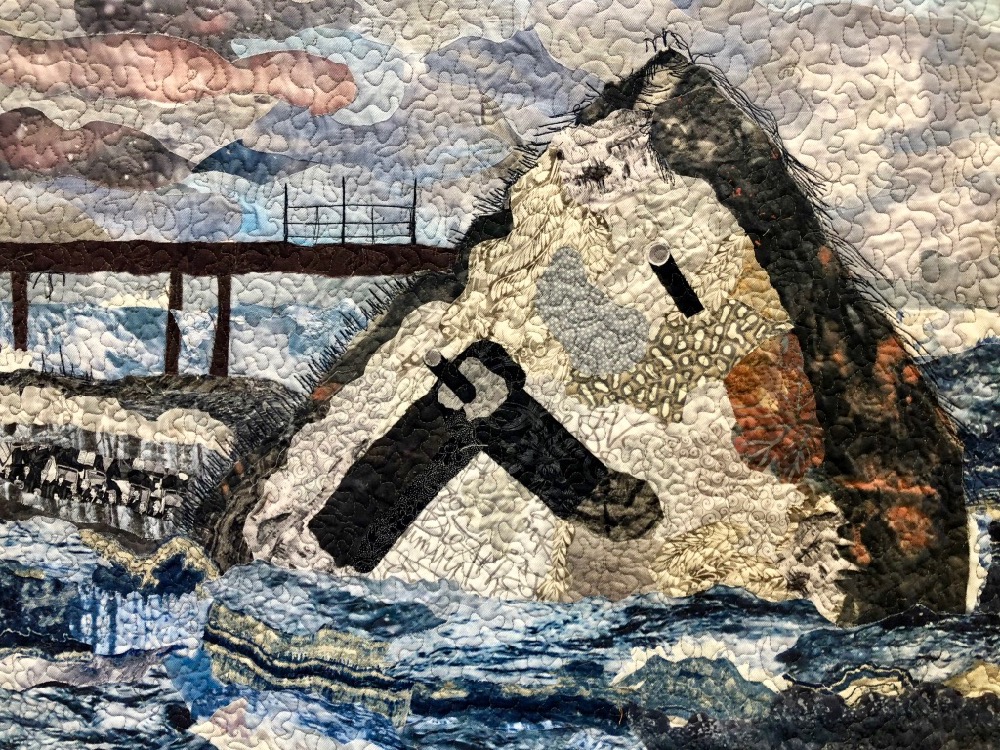








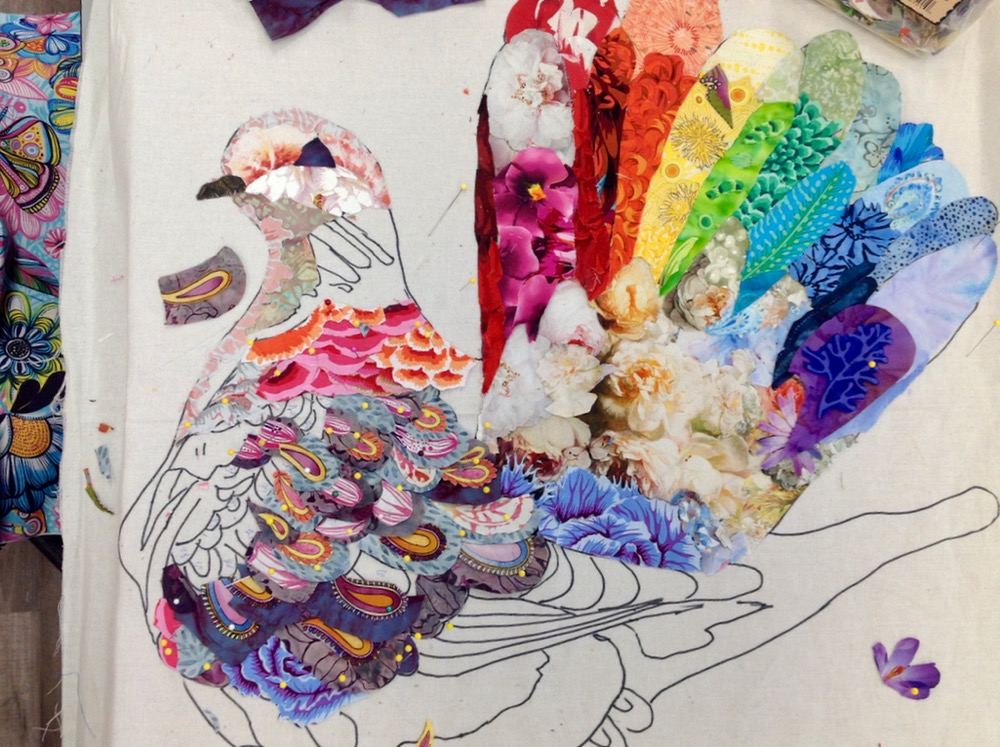
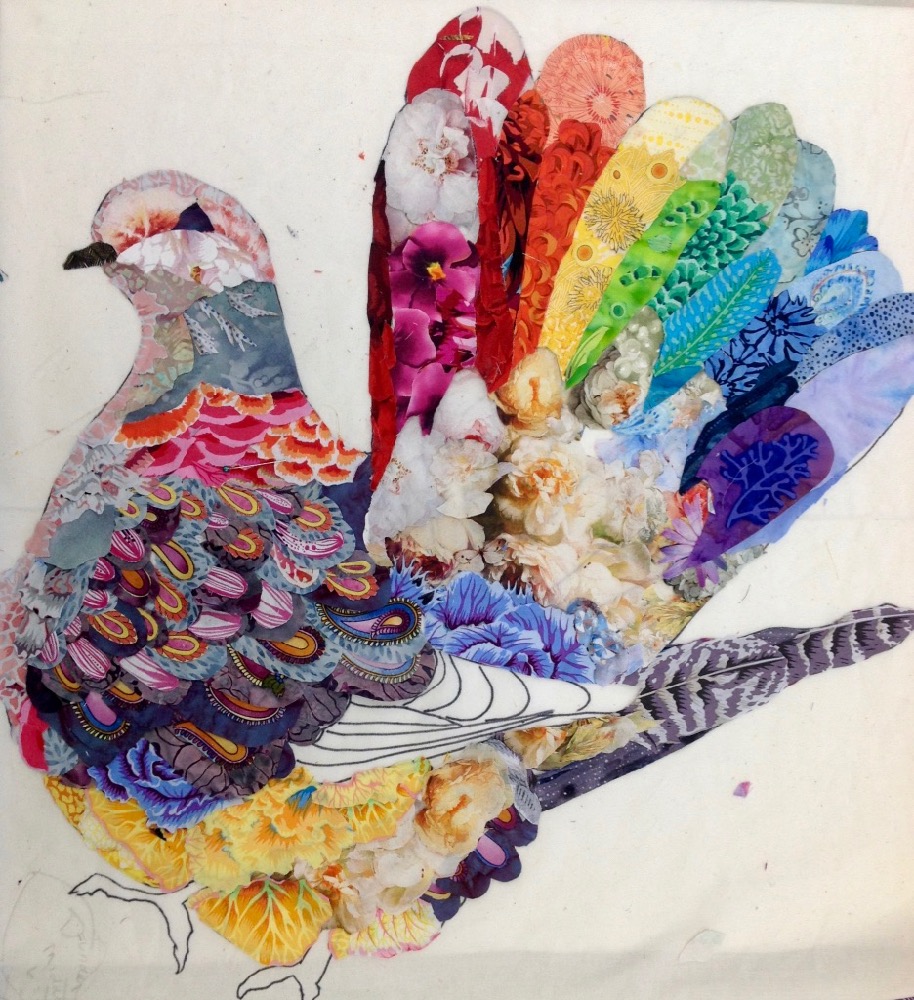






I was admiring the pretty mandala quilt by Lanette before I read the story! I laughed when I read the explanation of the design and then saw the skull! Egad! This is a girl after my own heart, not only because of the mandala quilt but the lovely story about her grandmother and the perfect rendition of her face in cloth. Great job.
Susan Carlson quedas invitada a mi casa en España y ha cambio me enseña s ha hacer edredones.